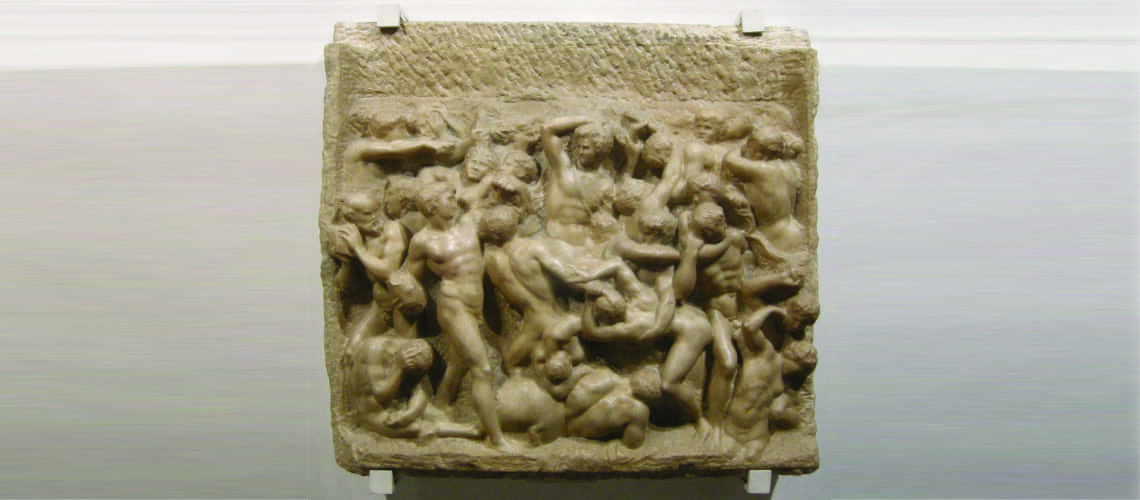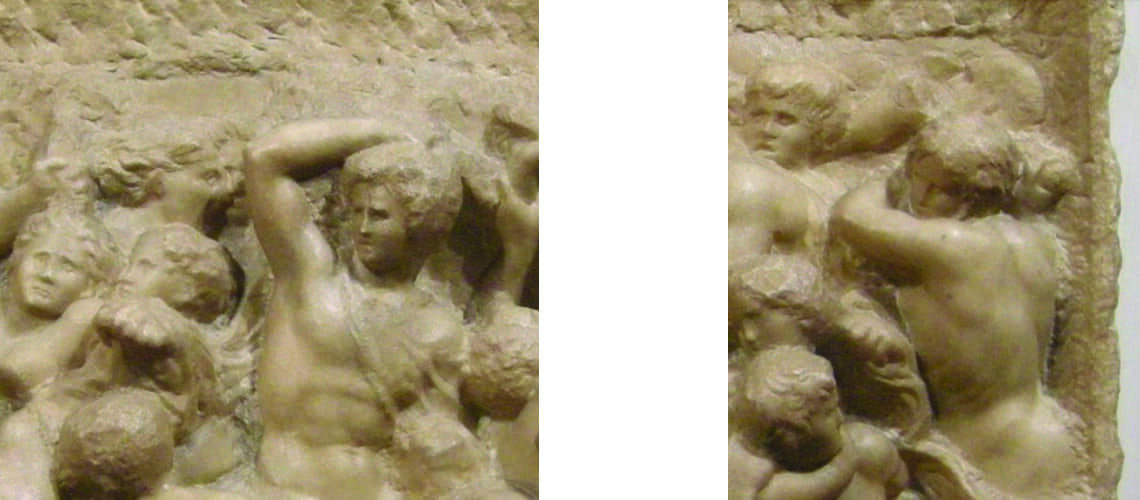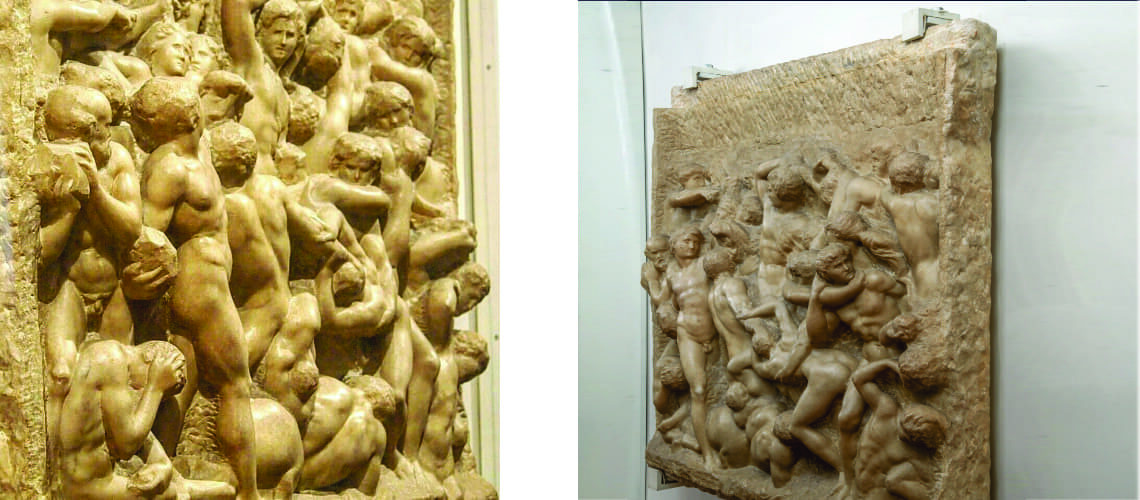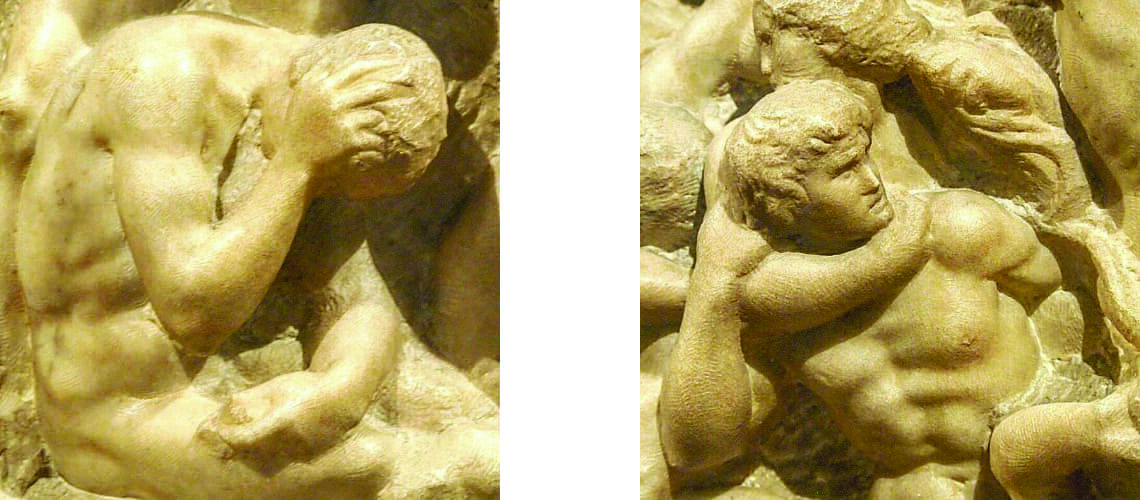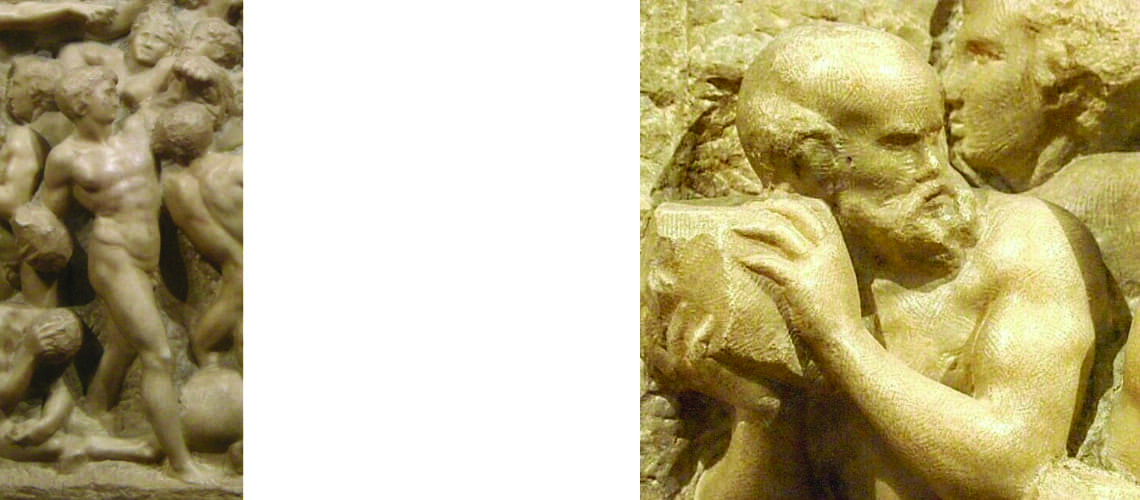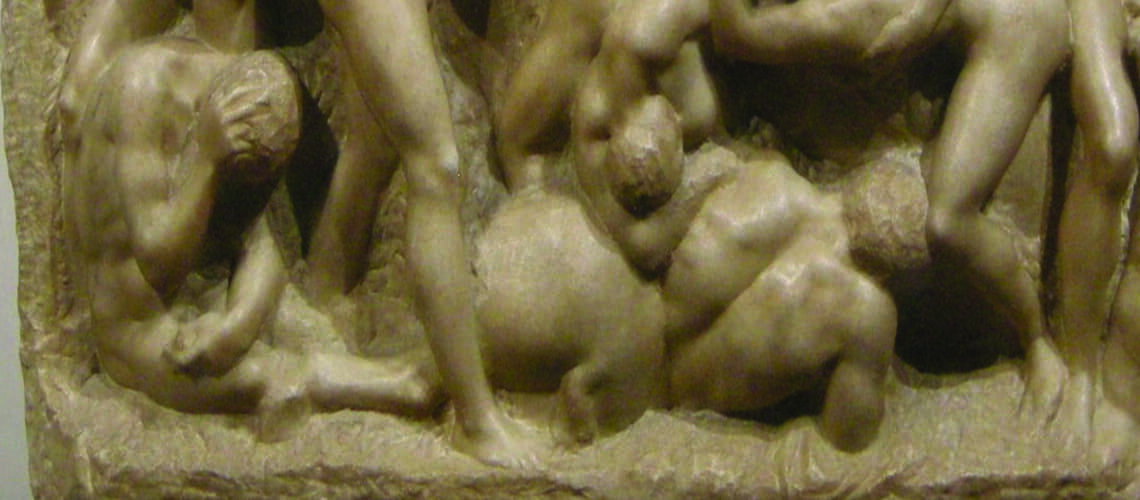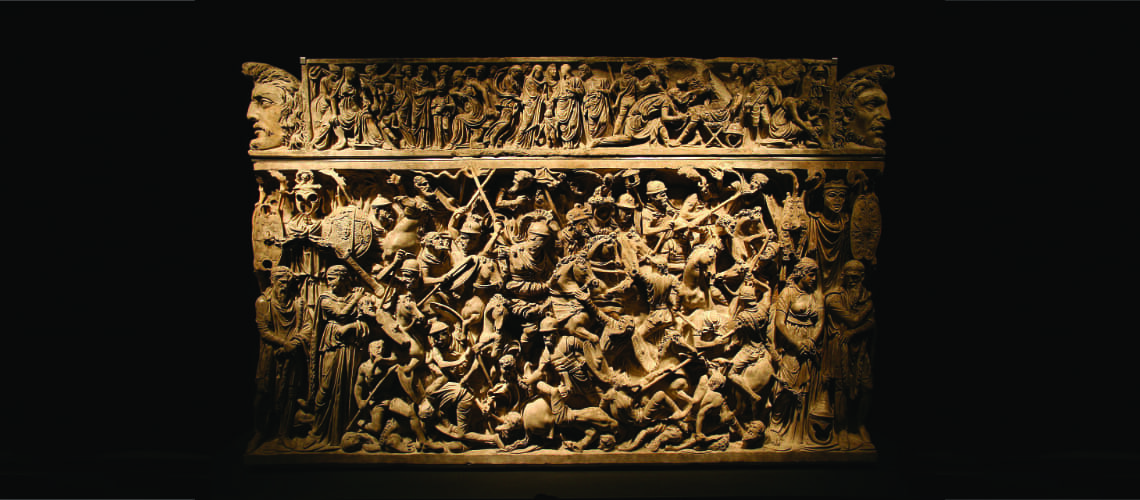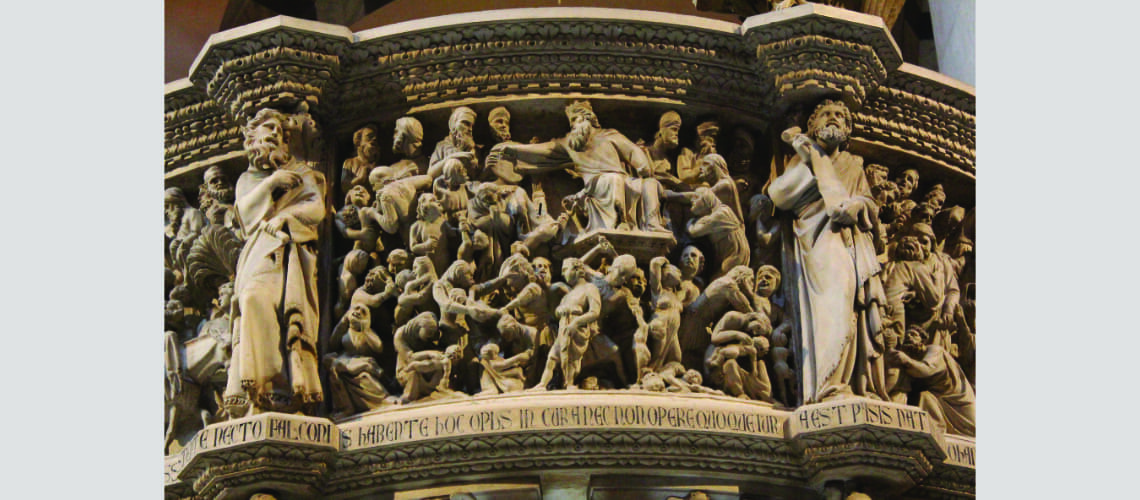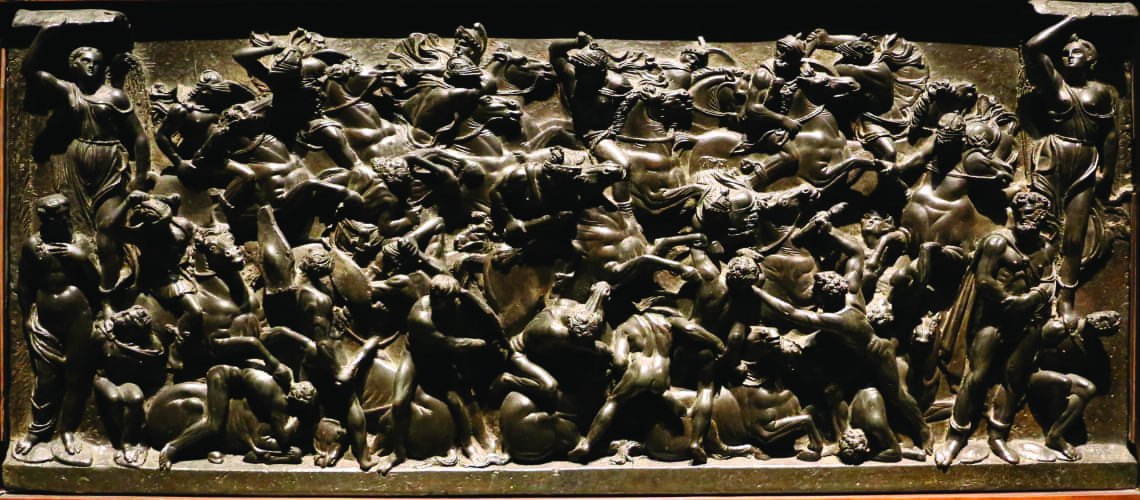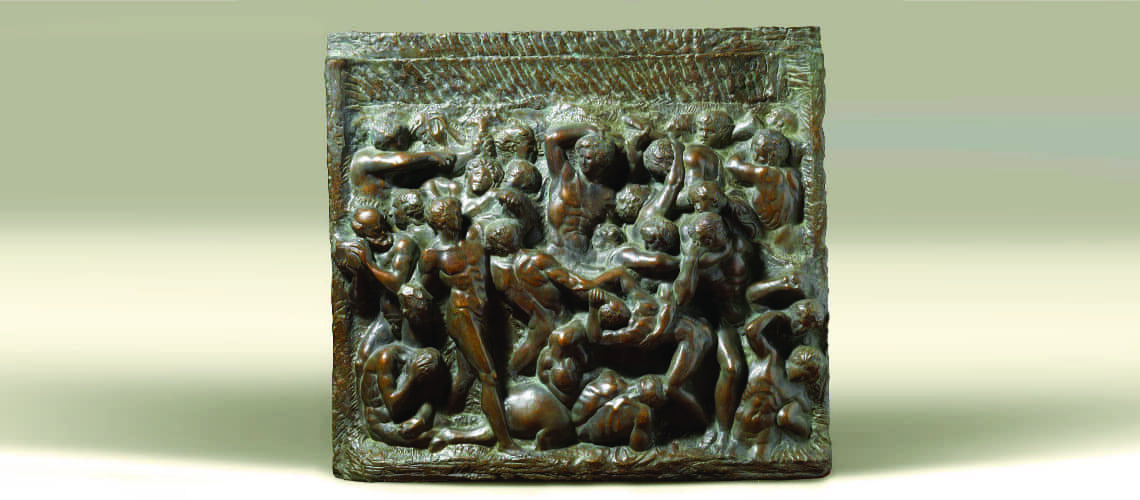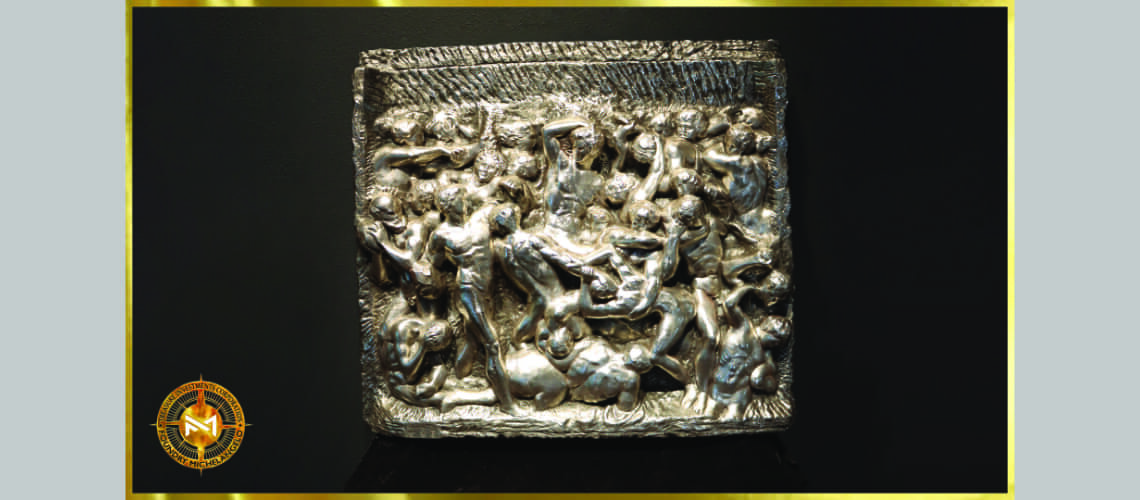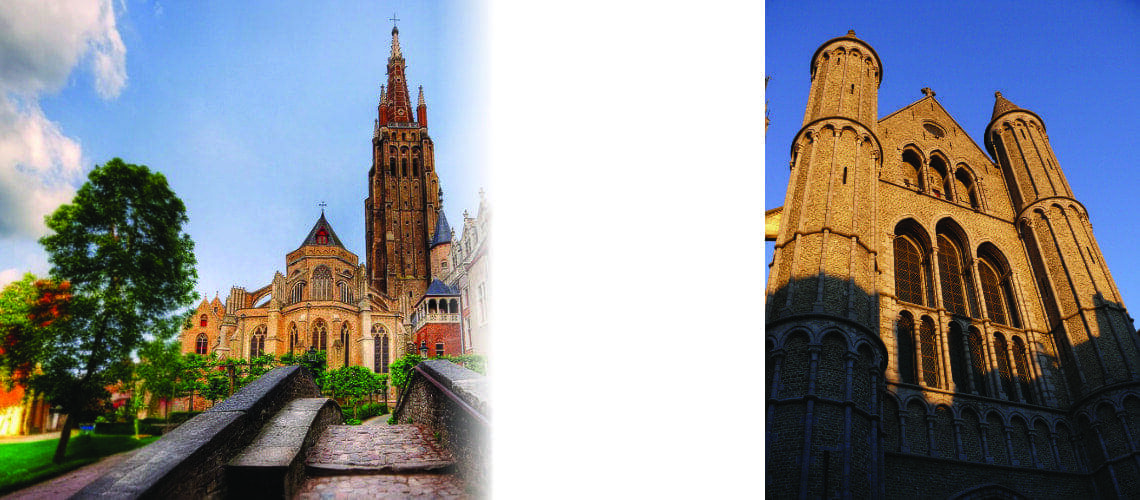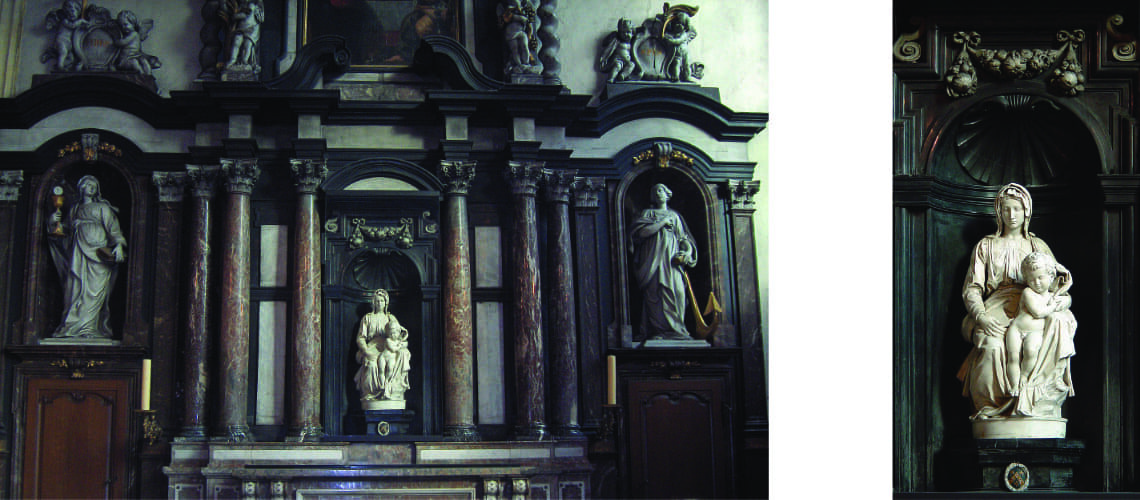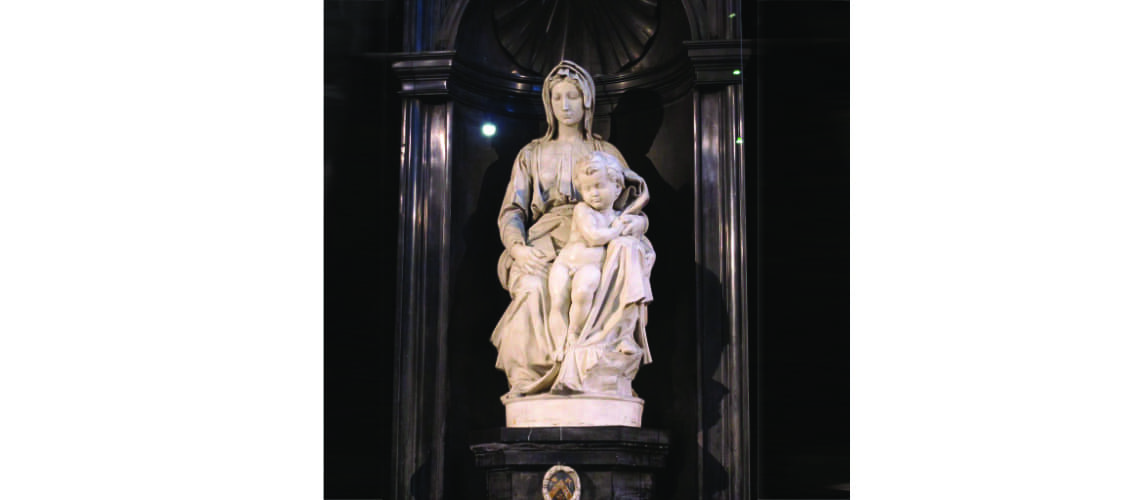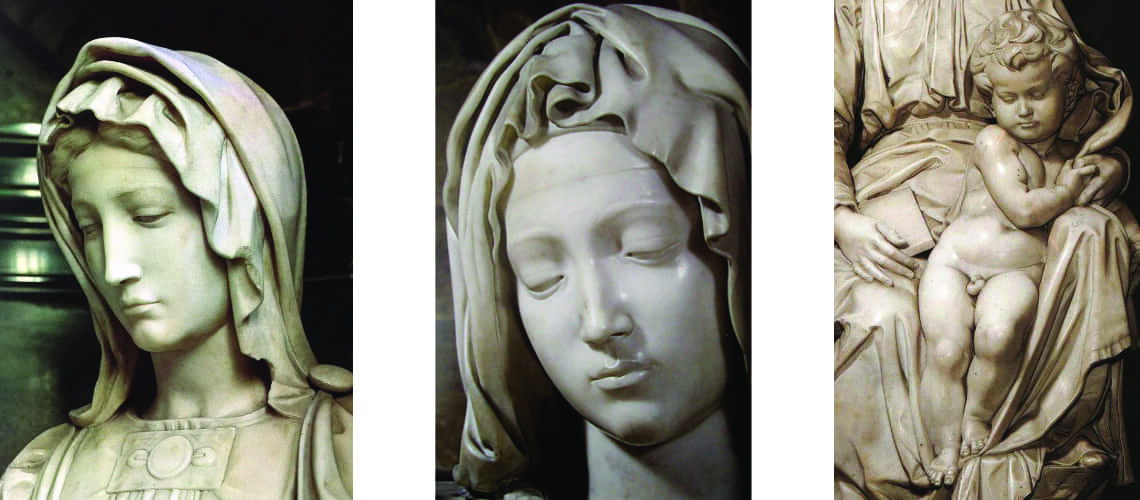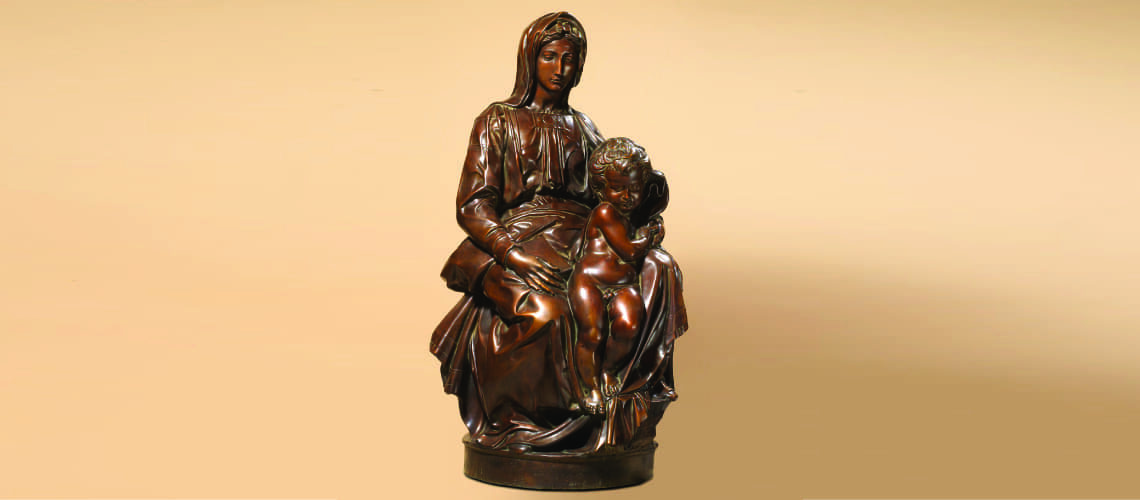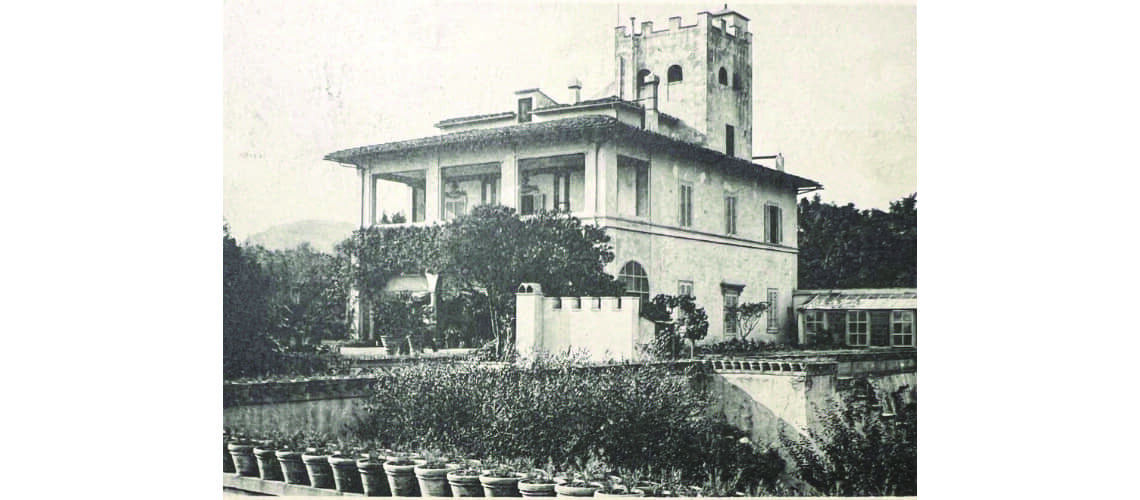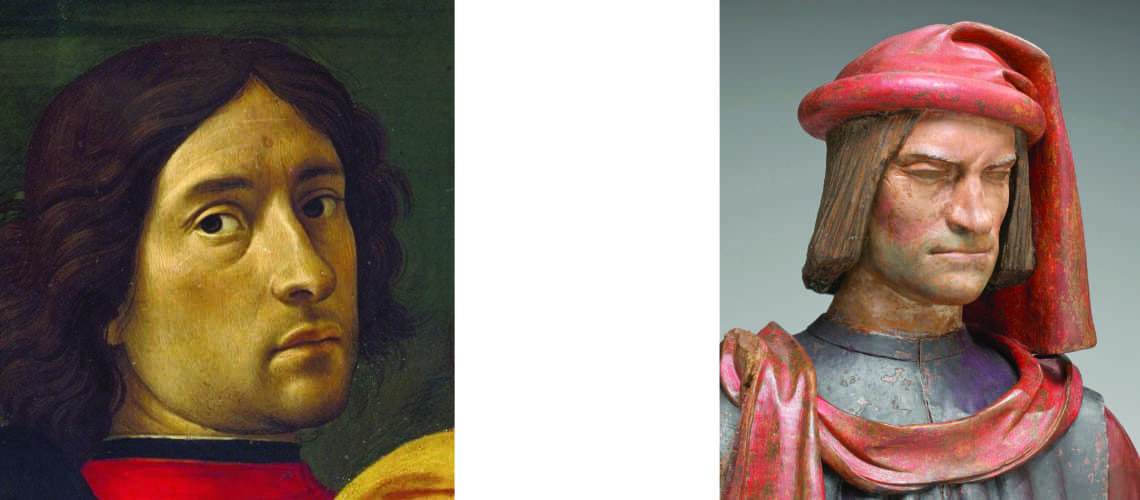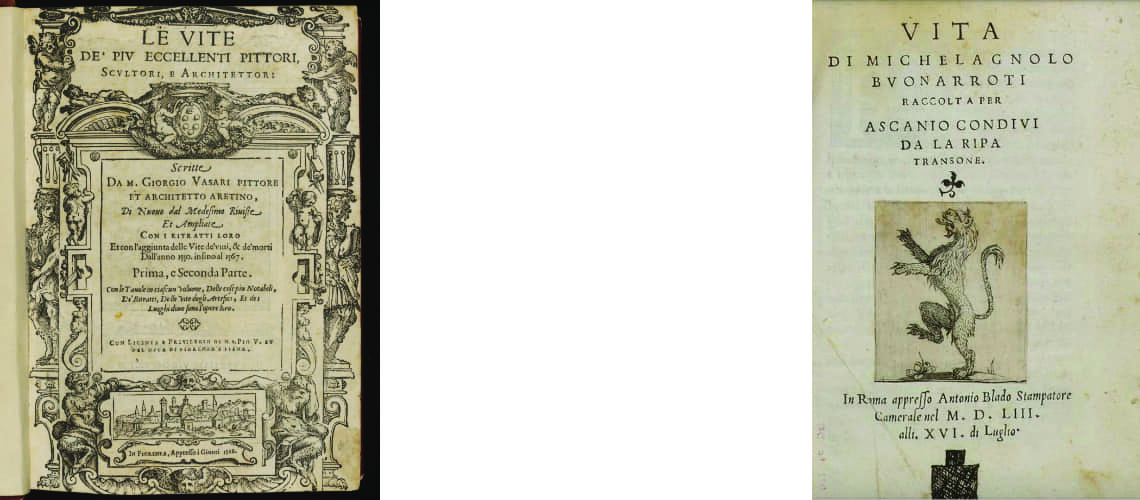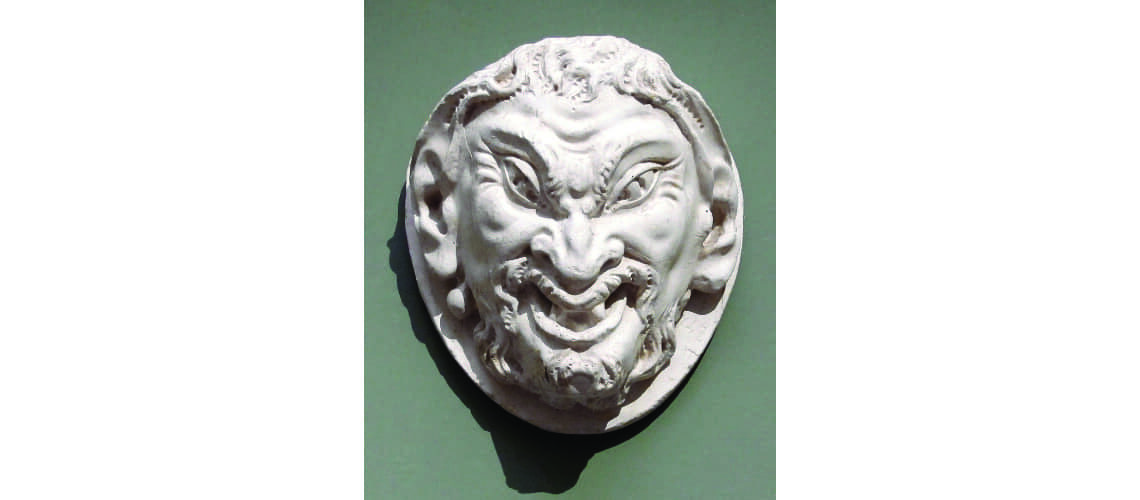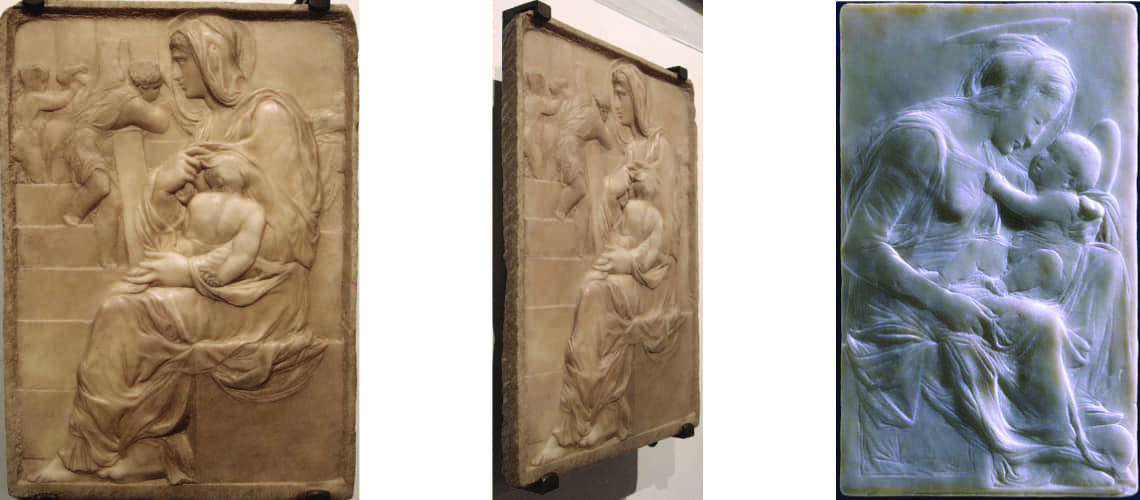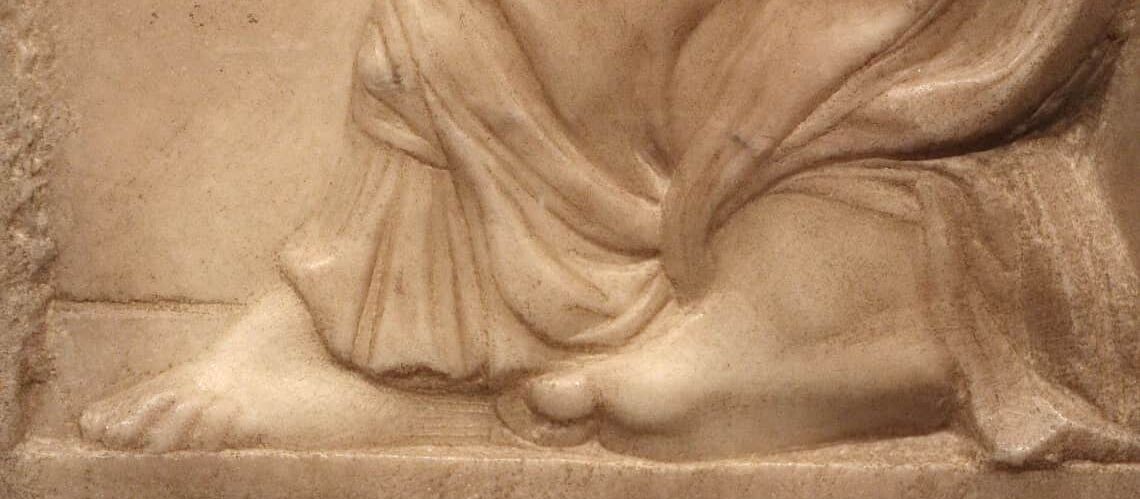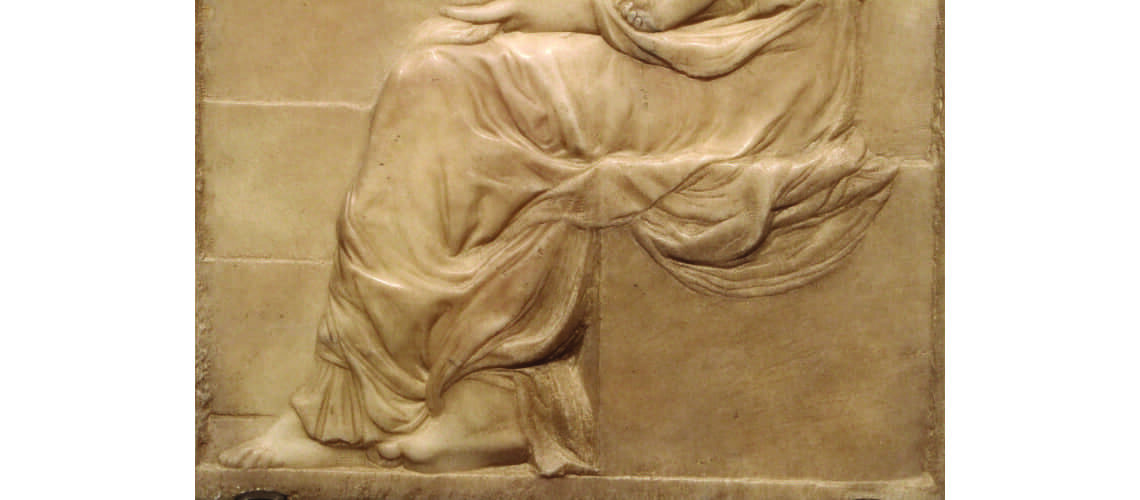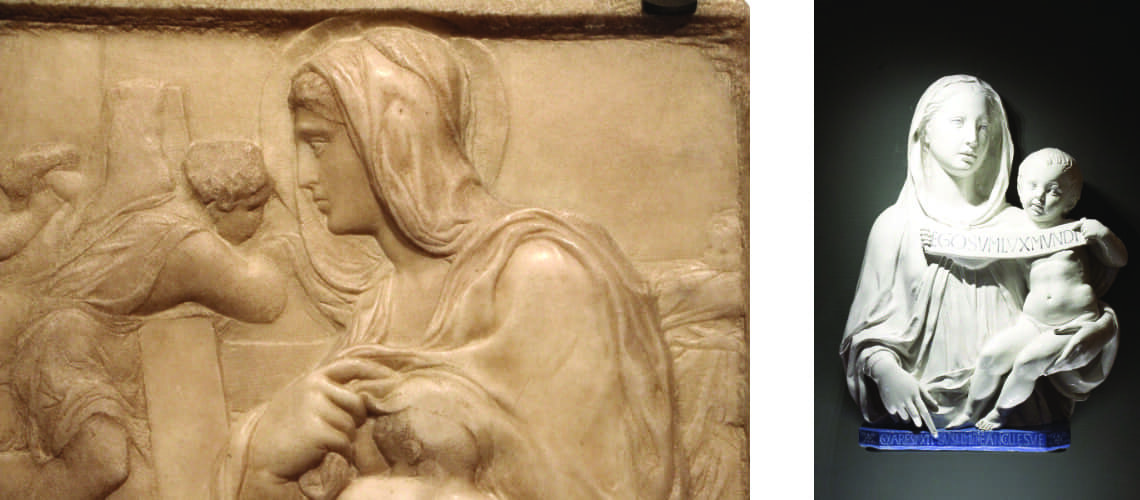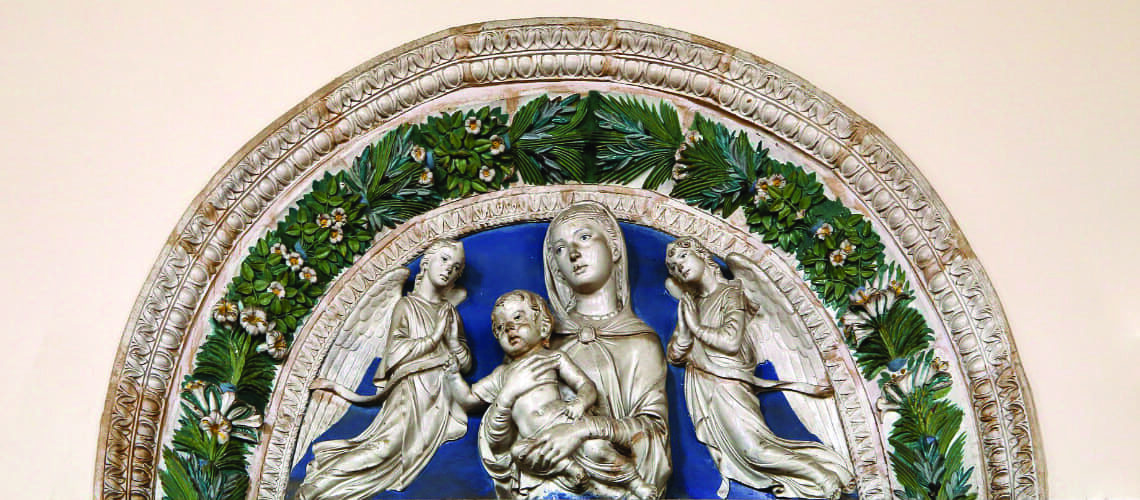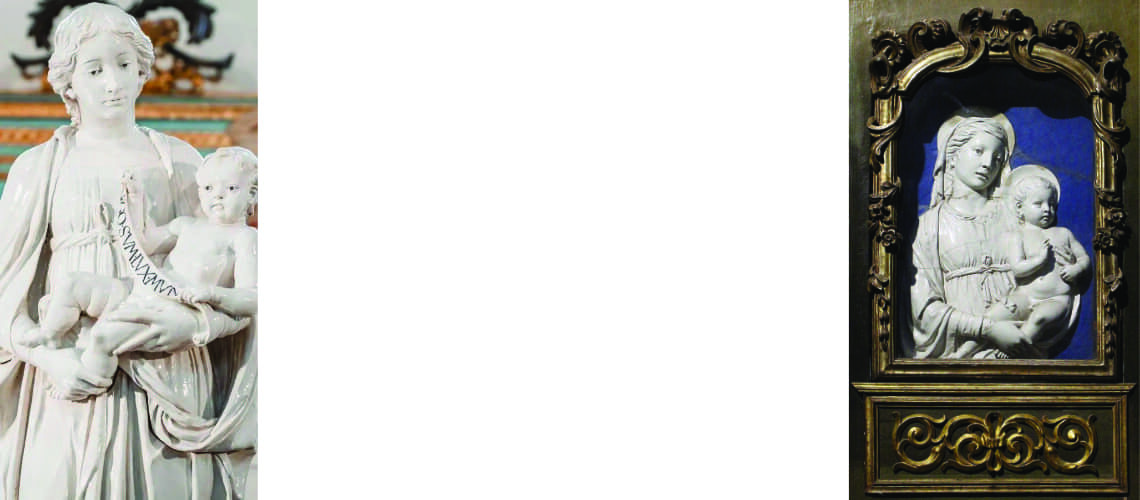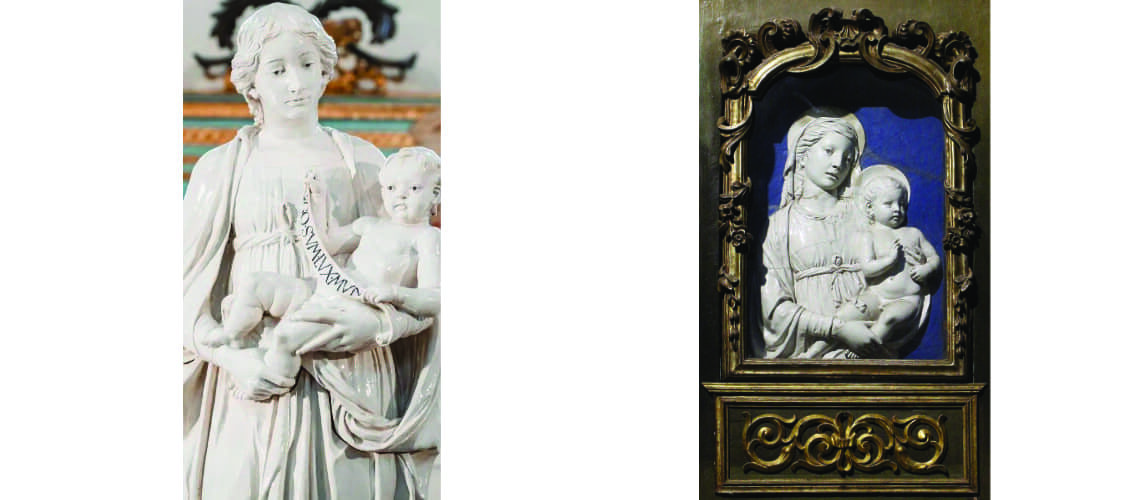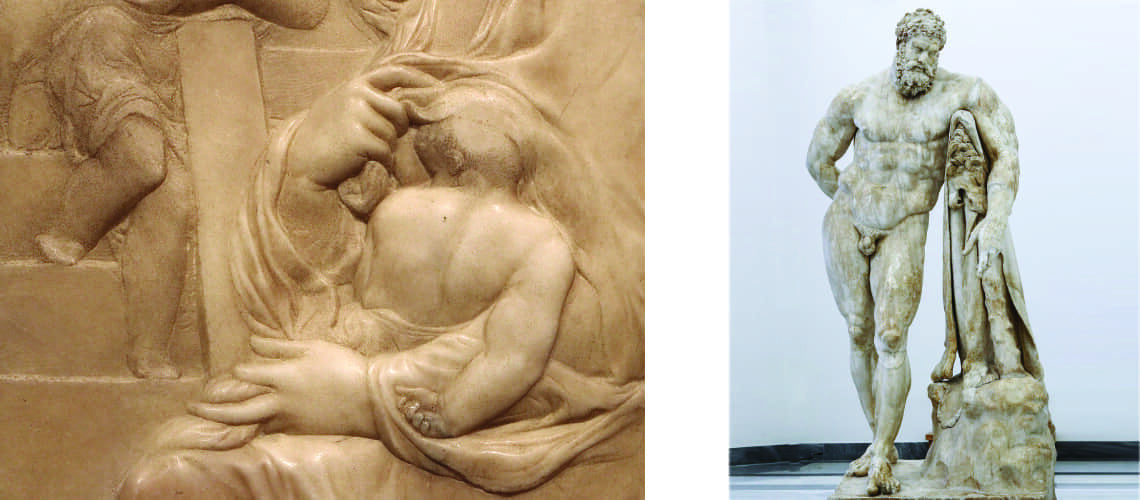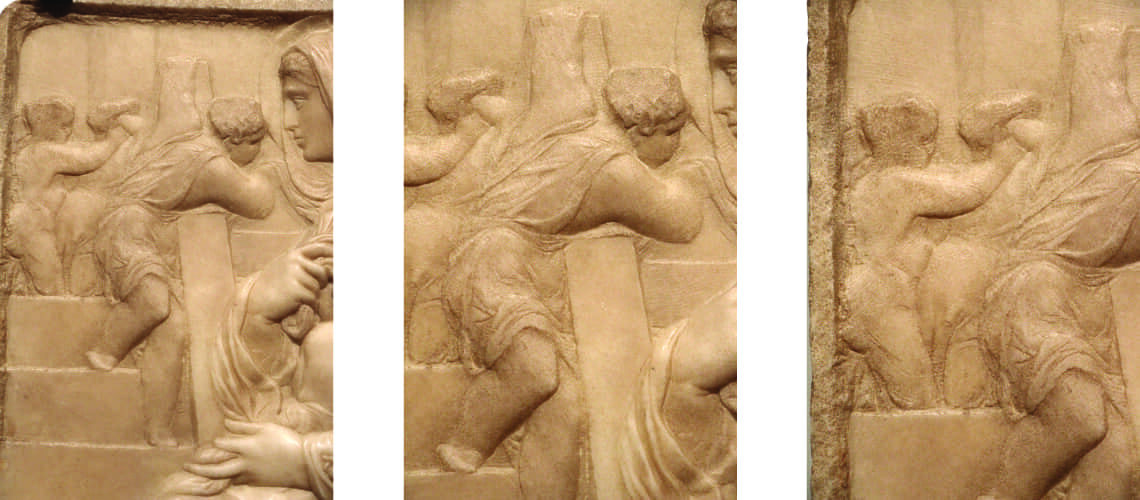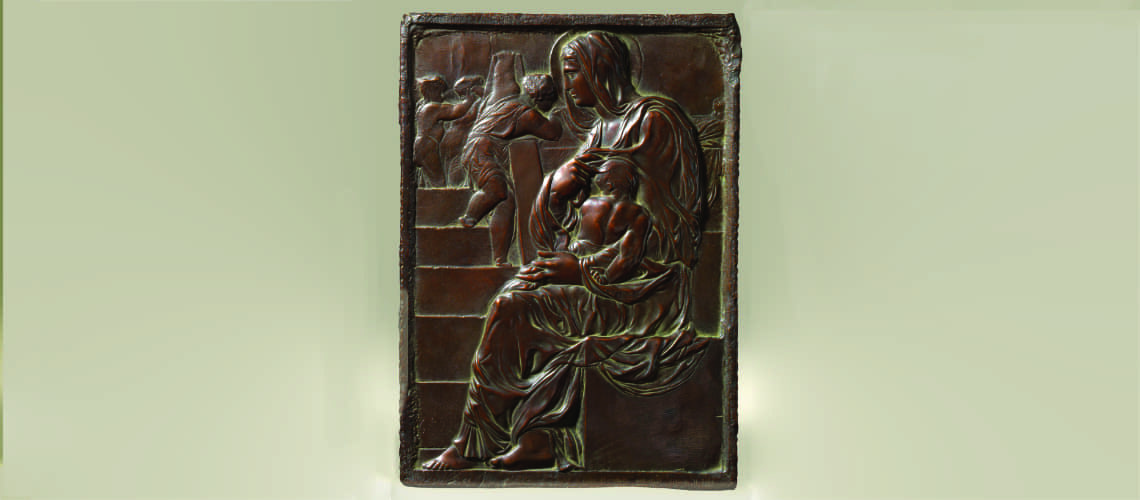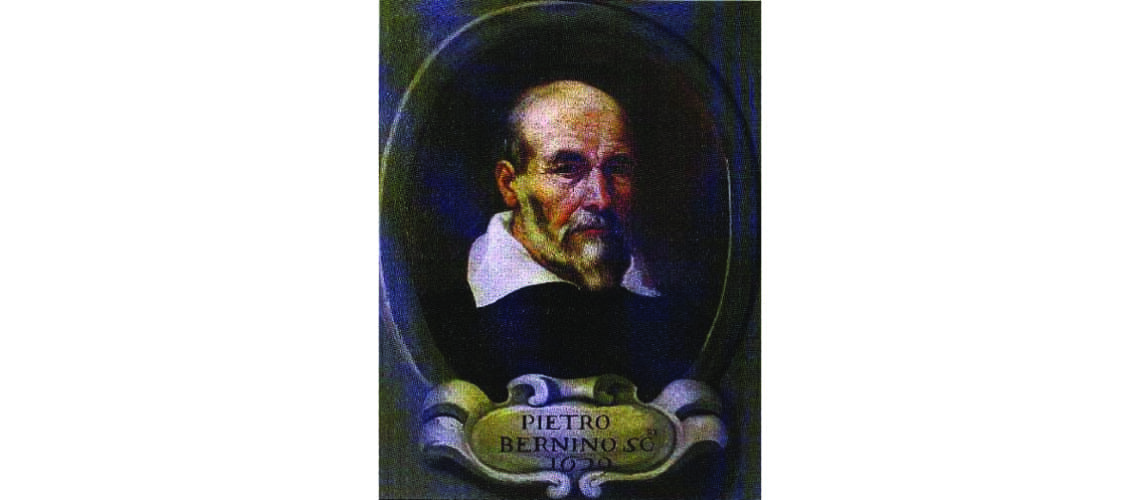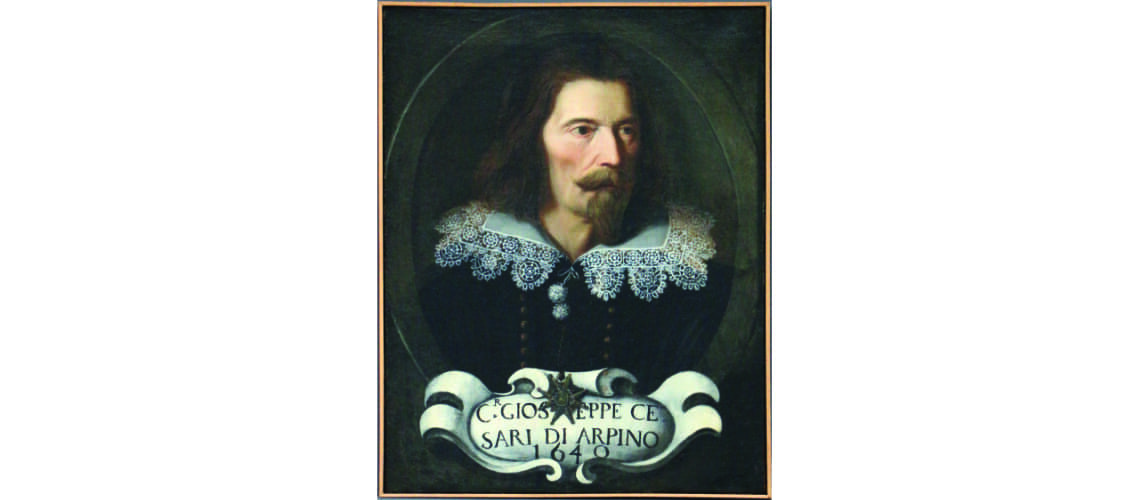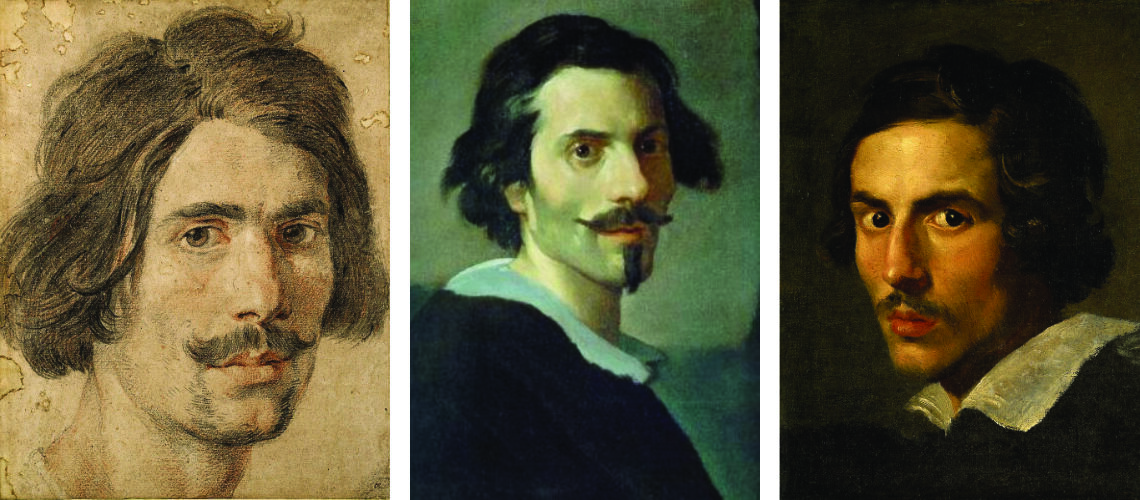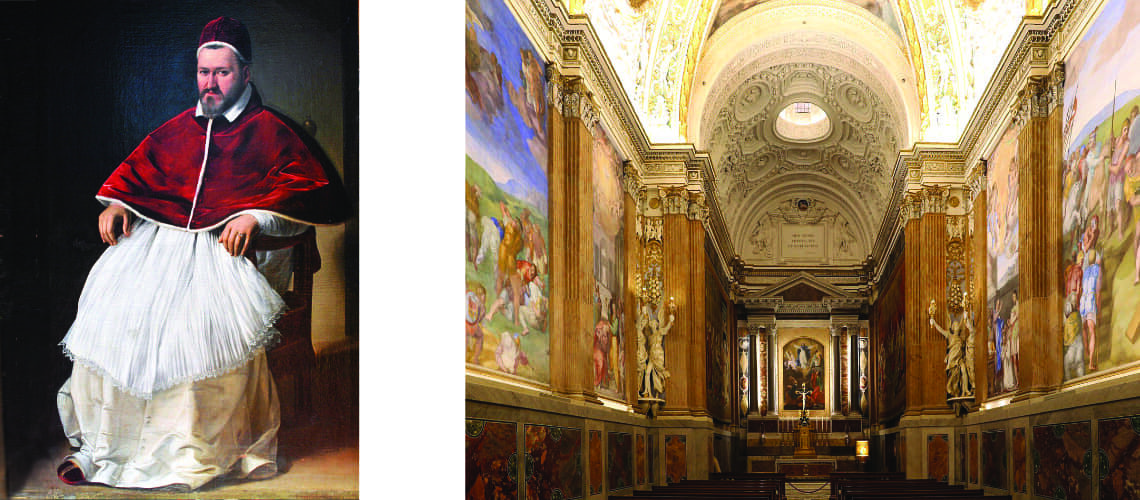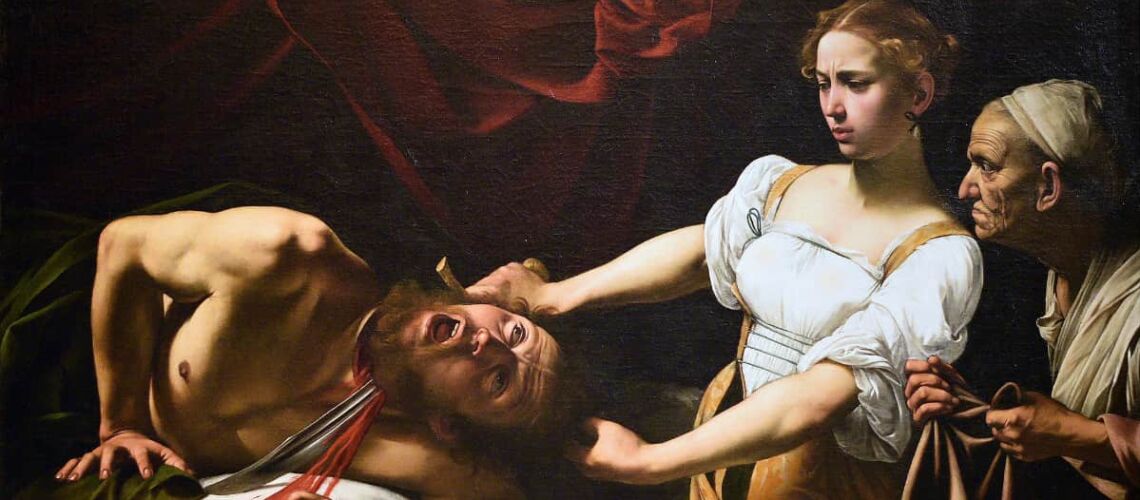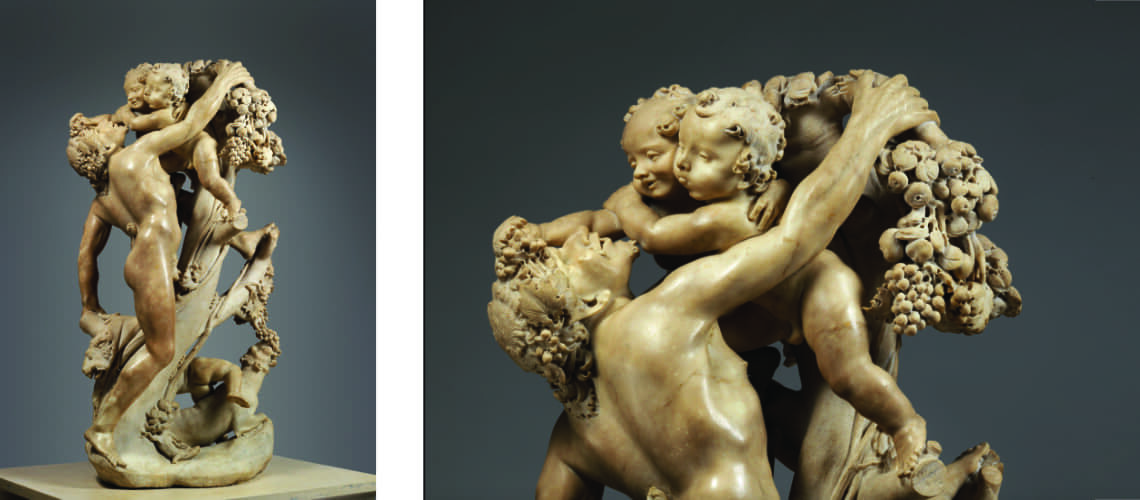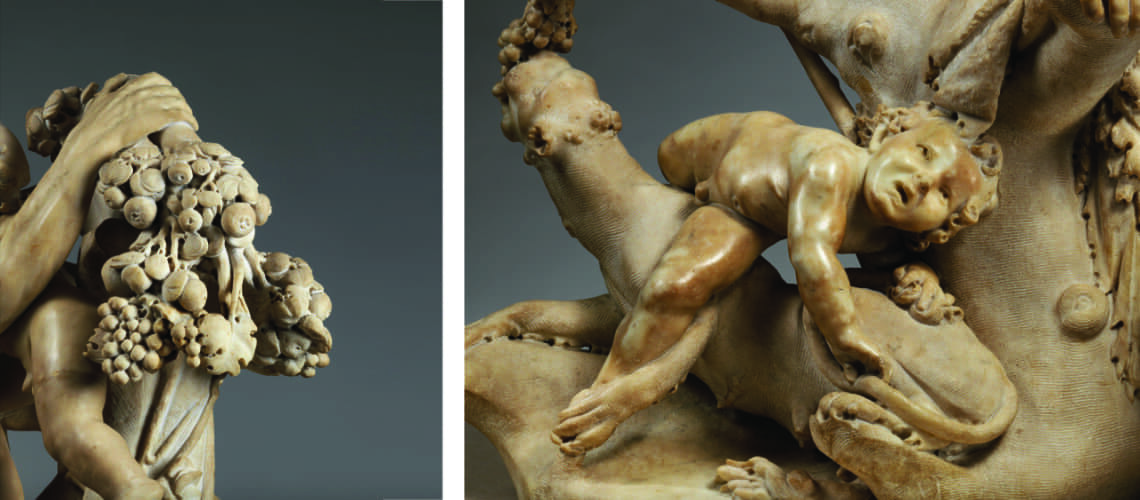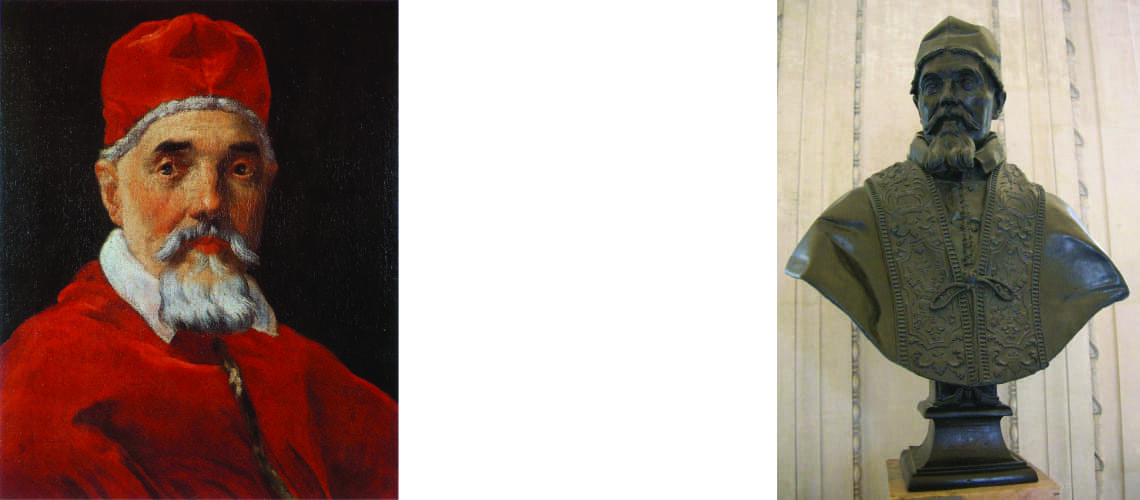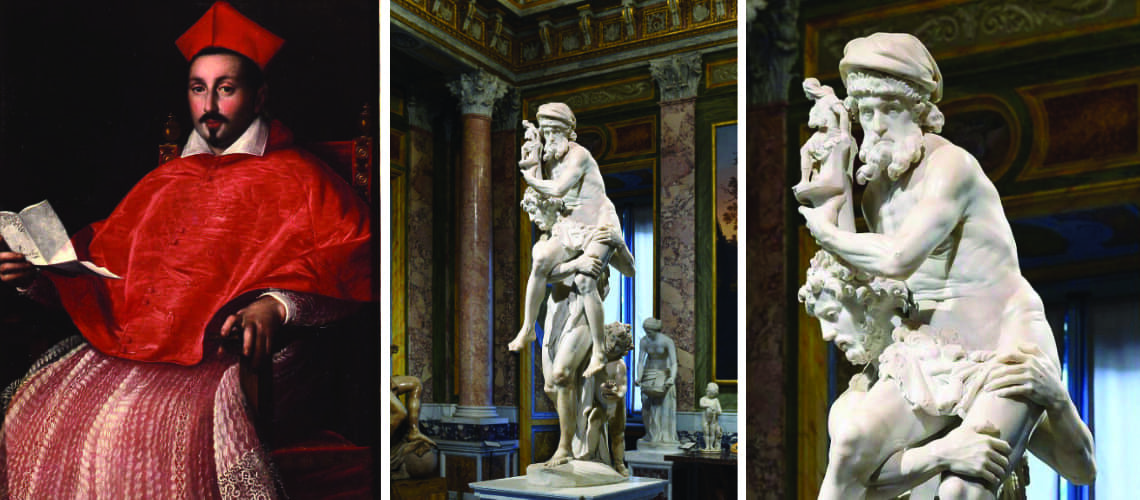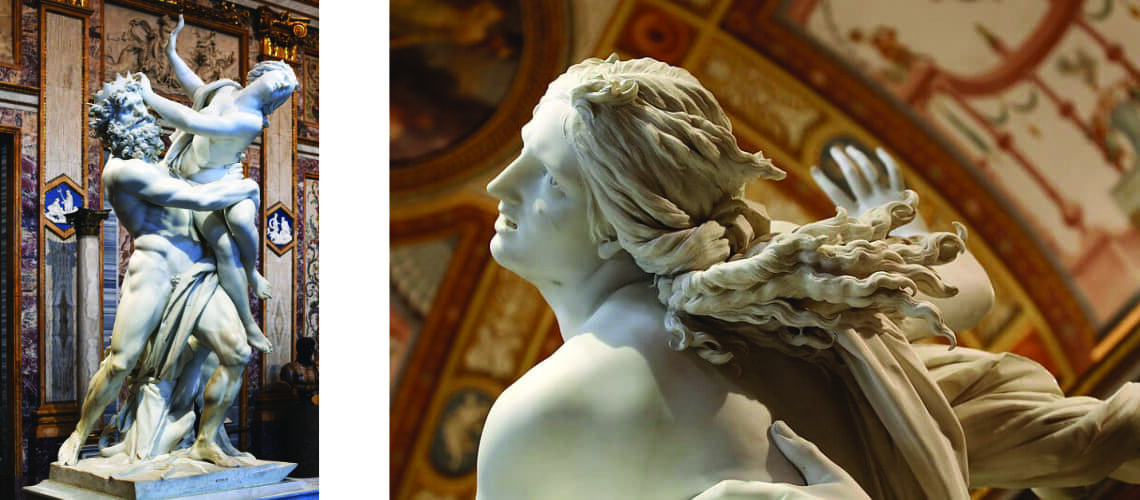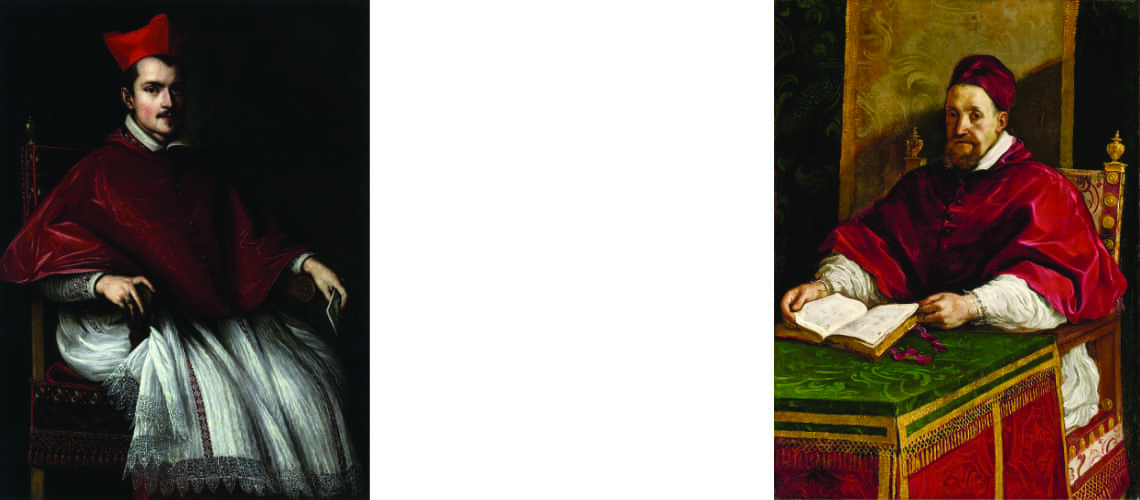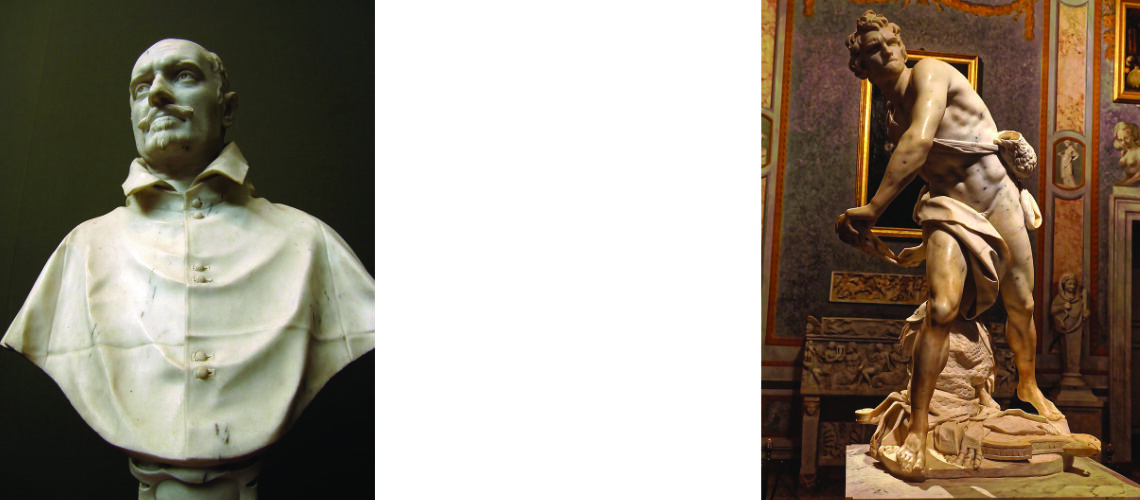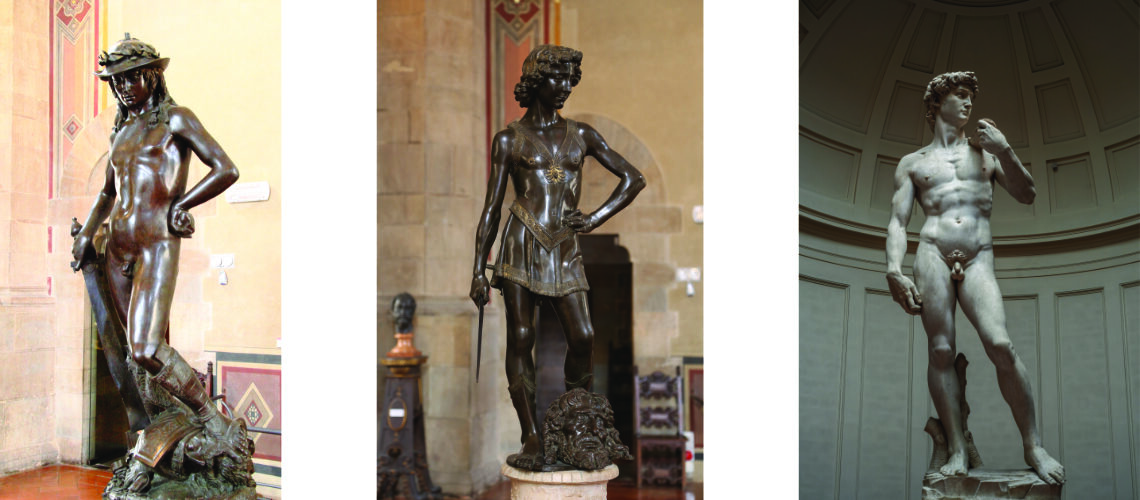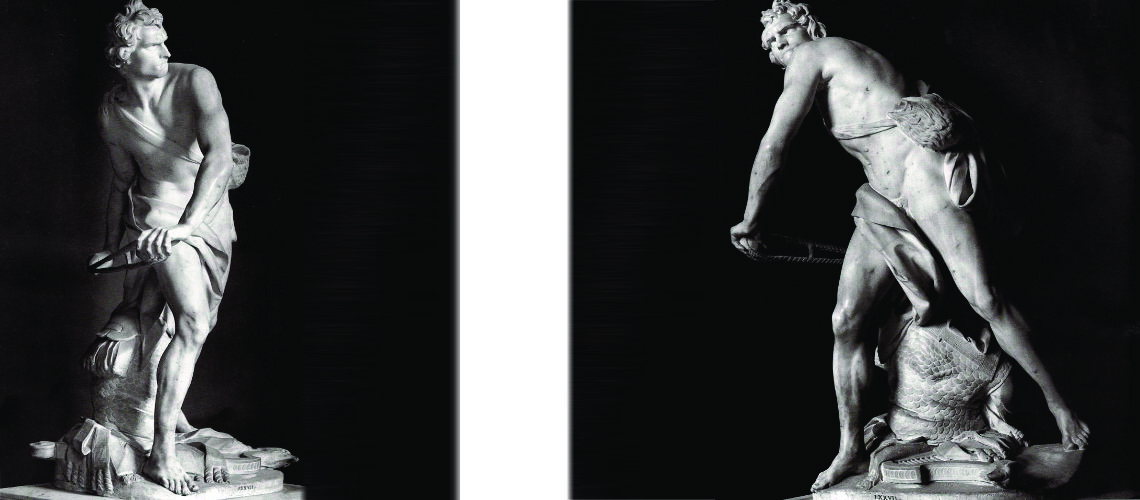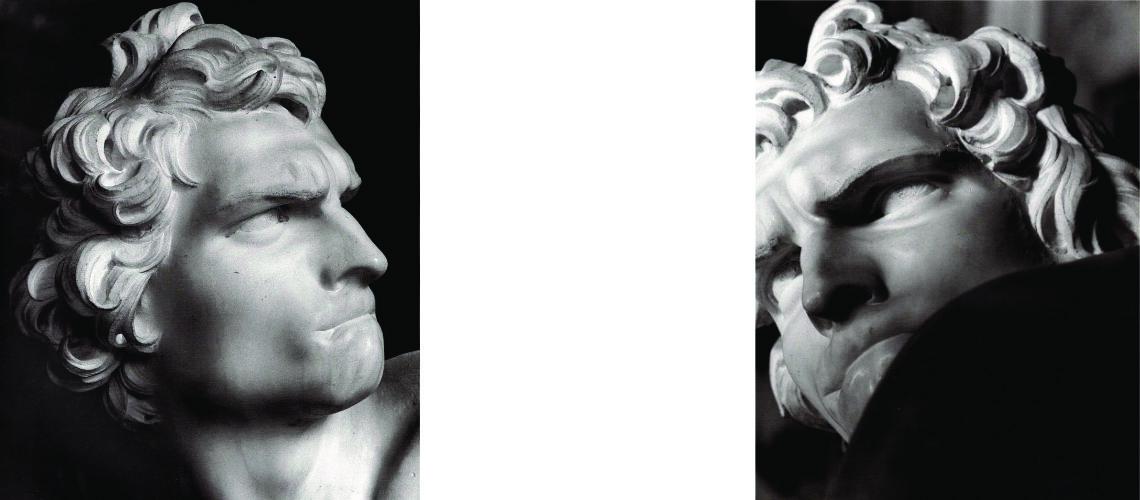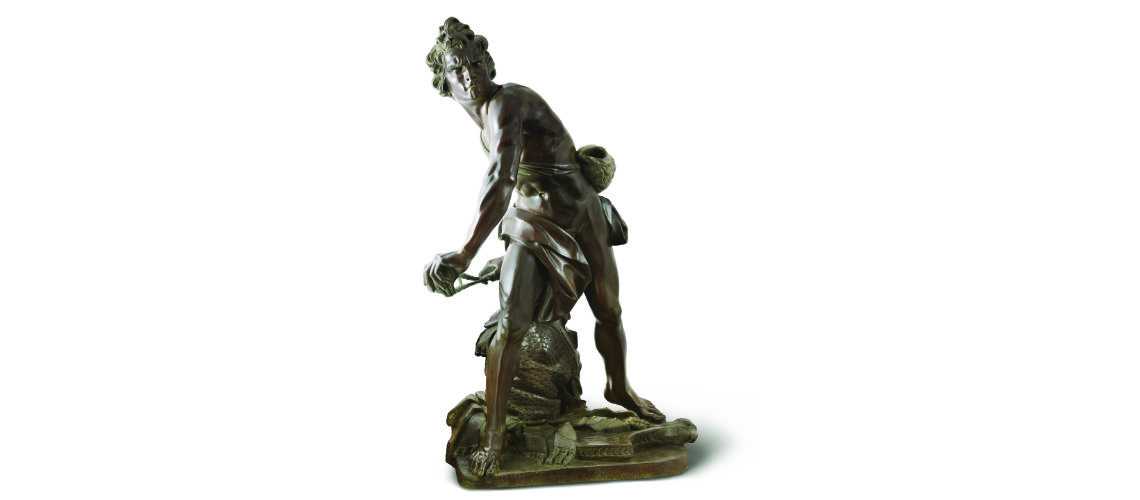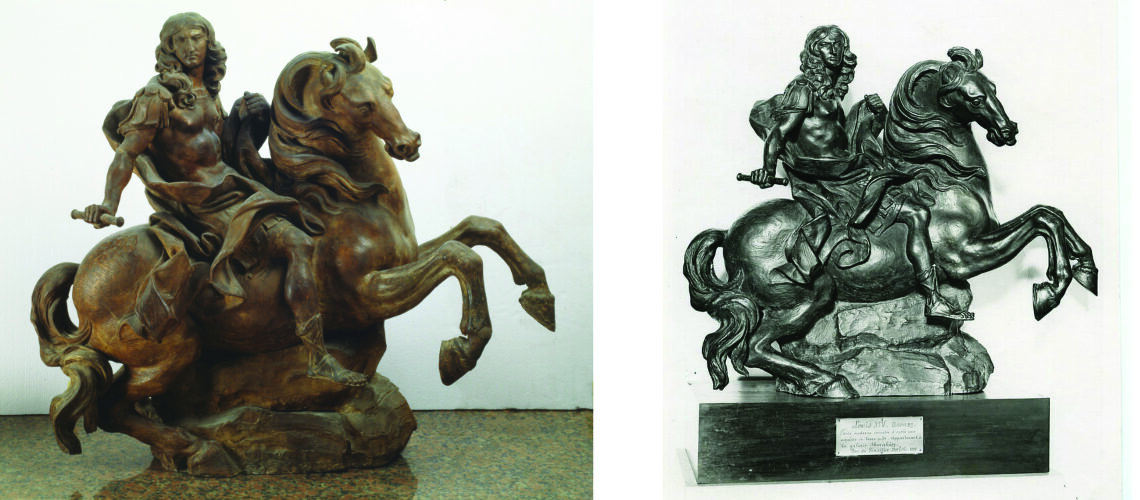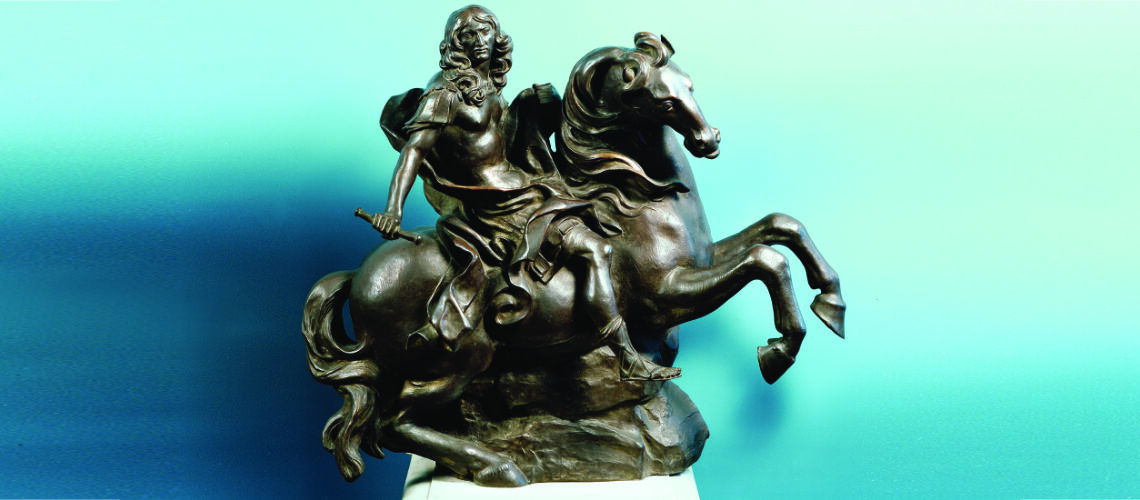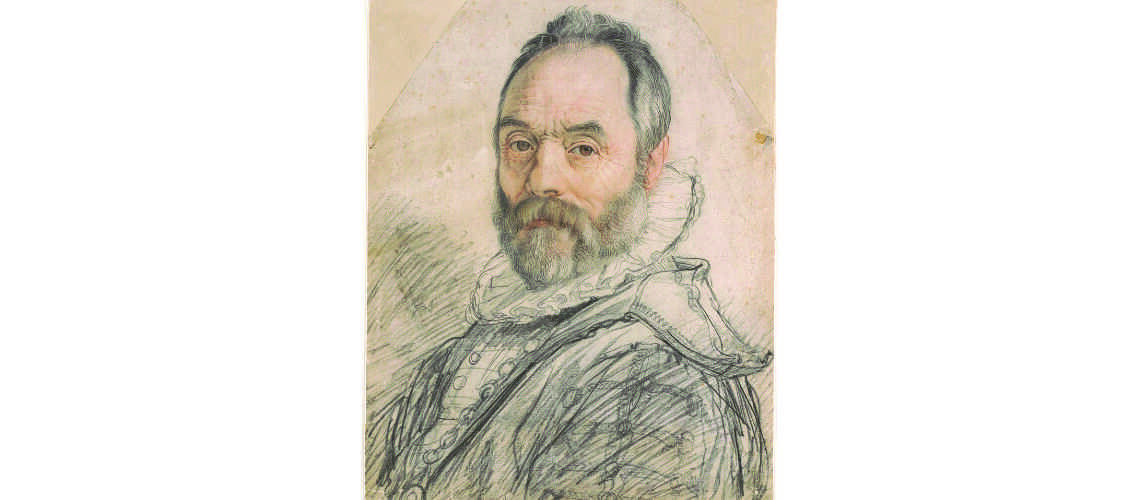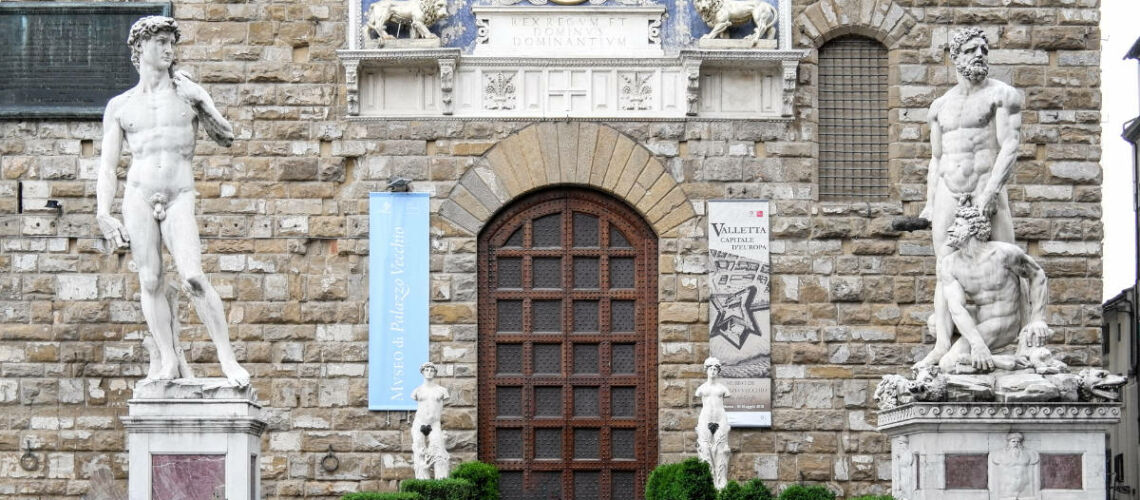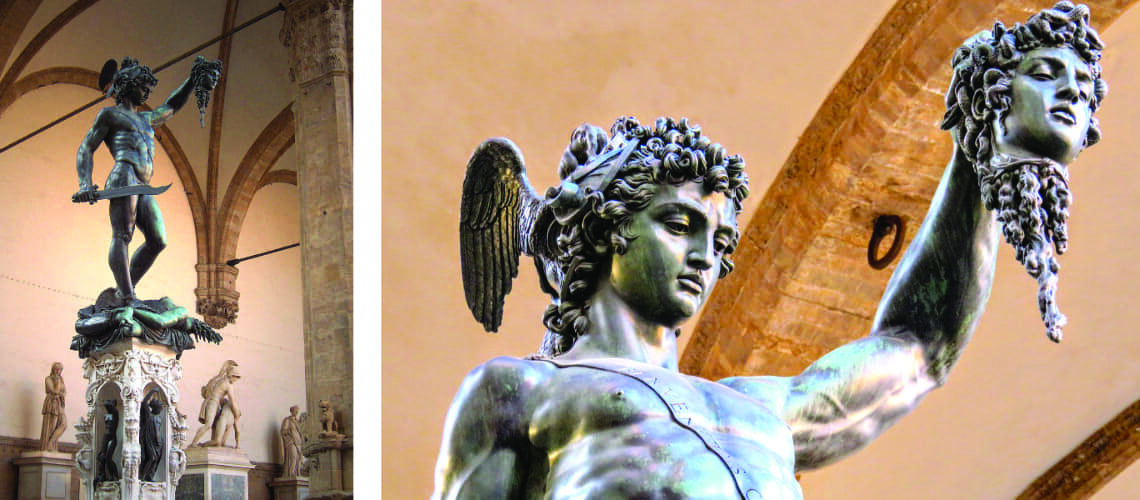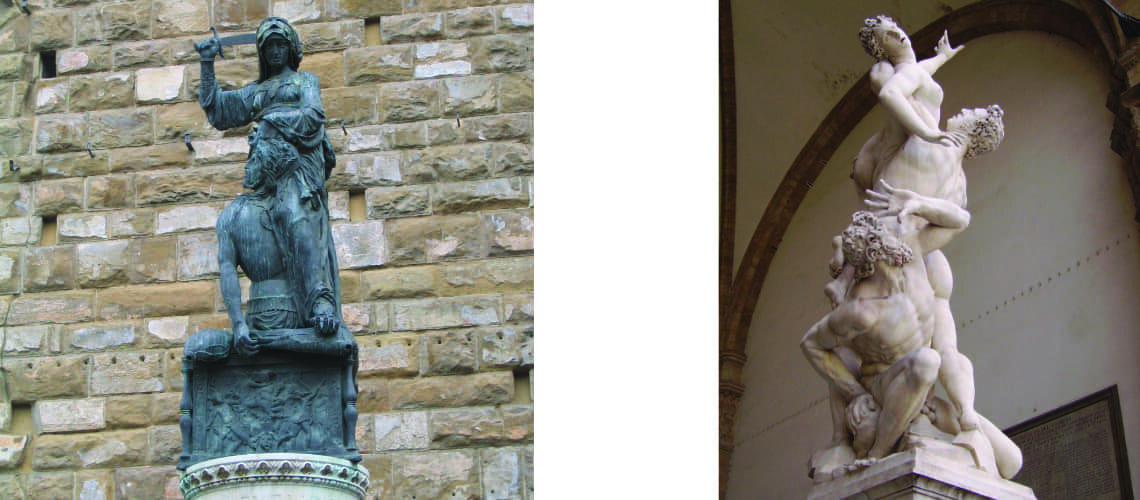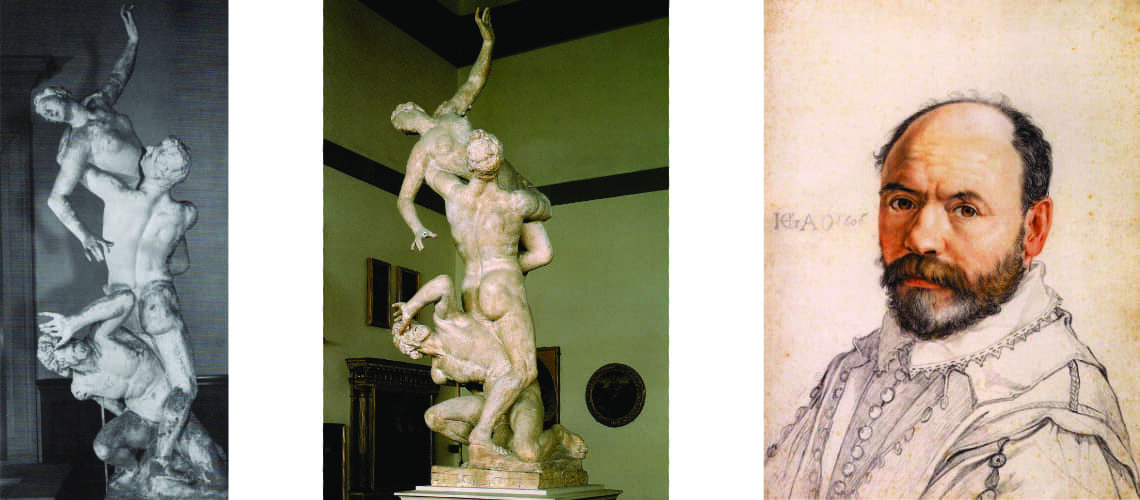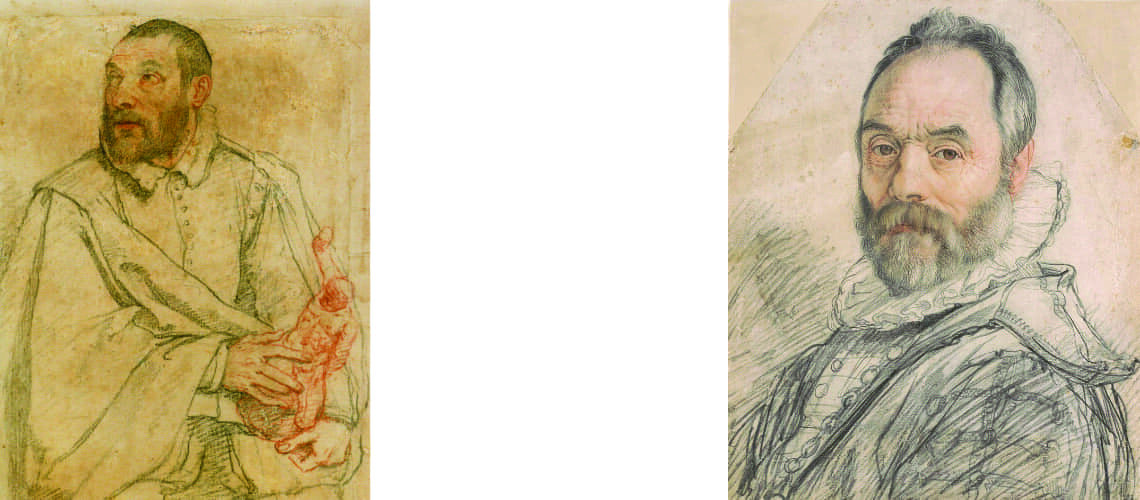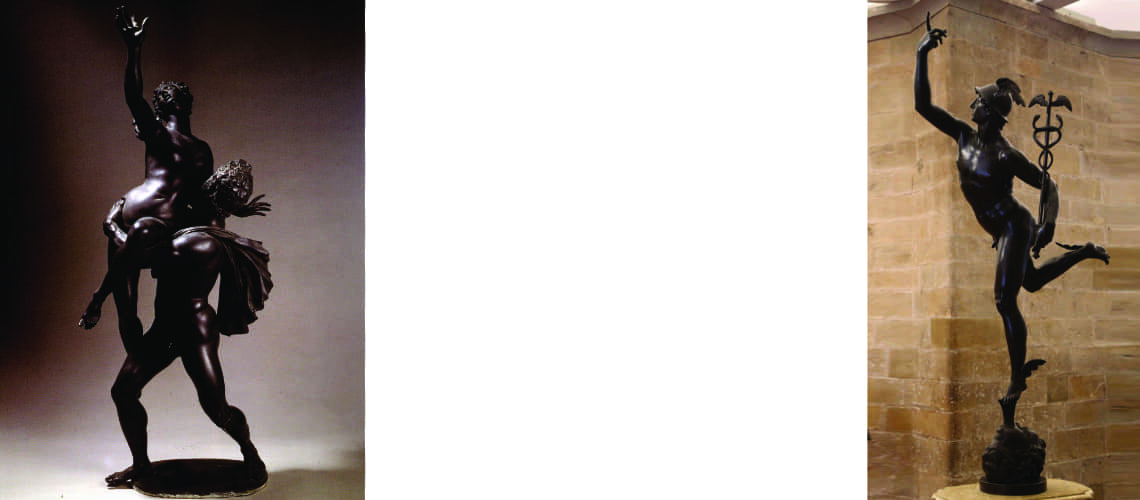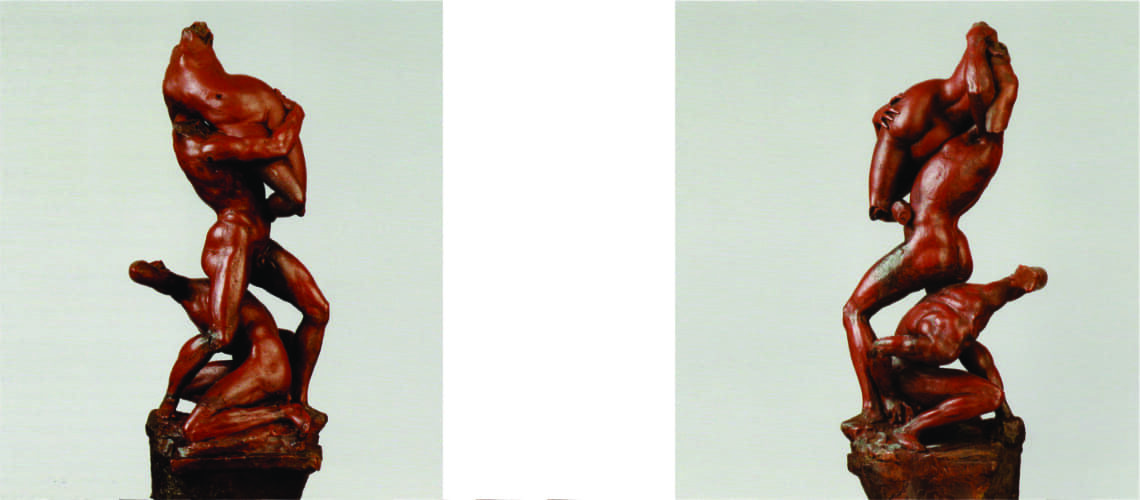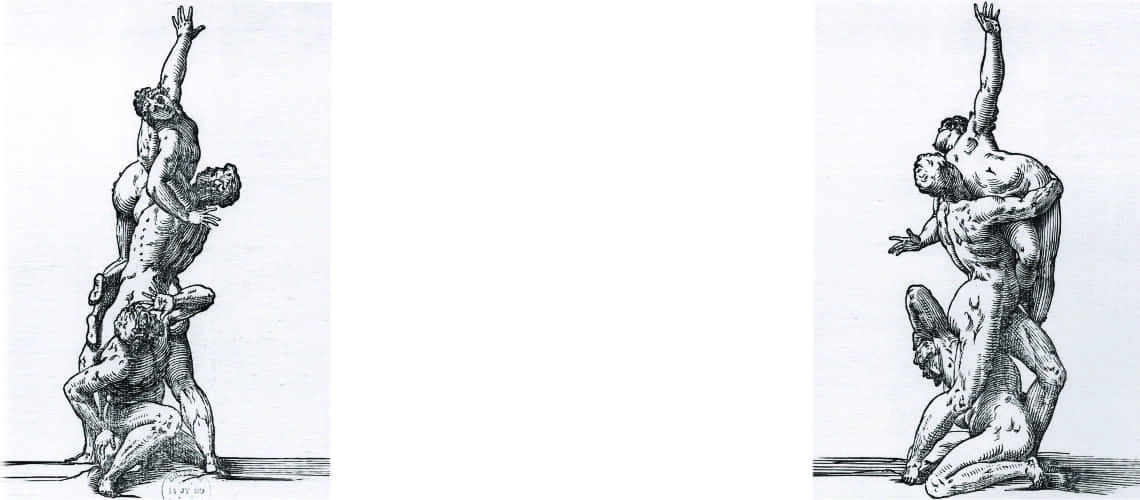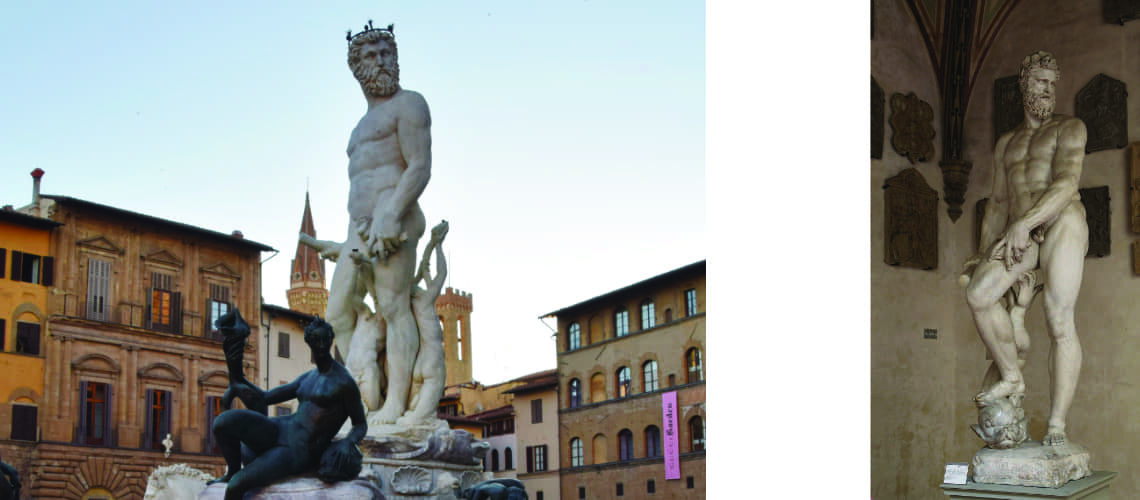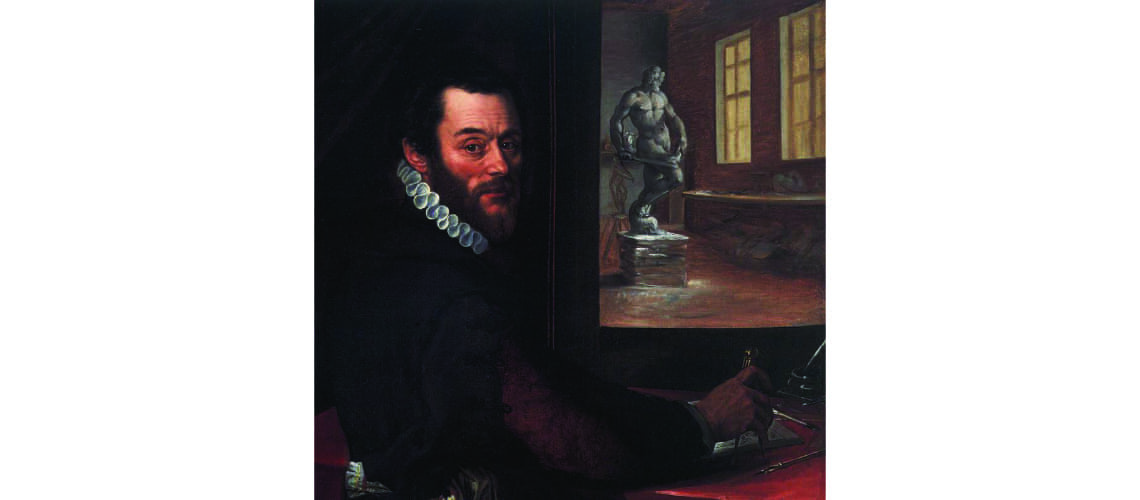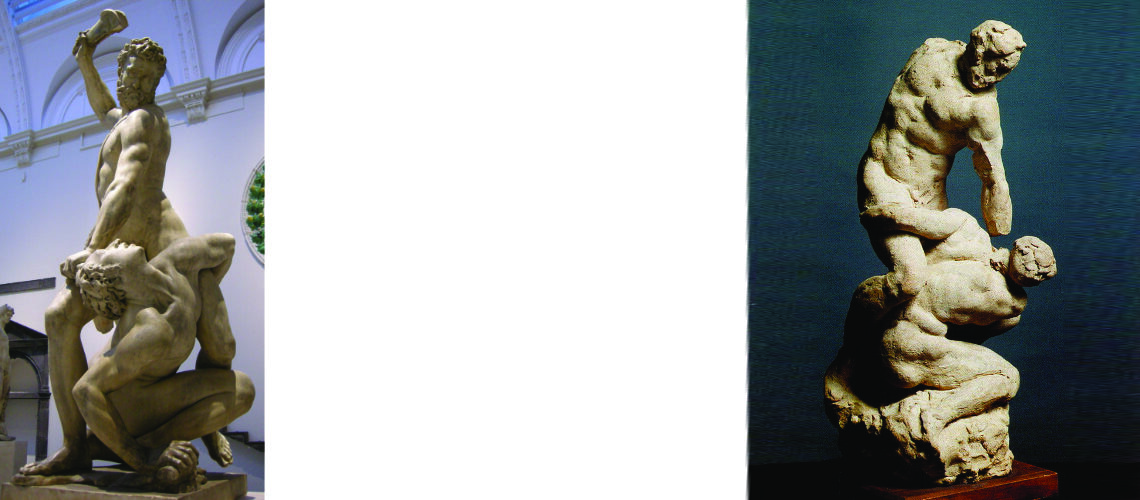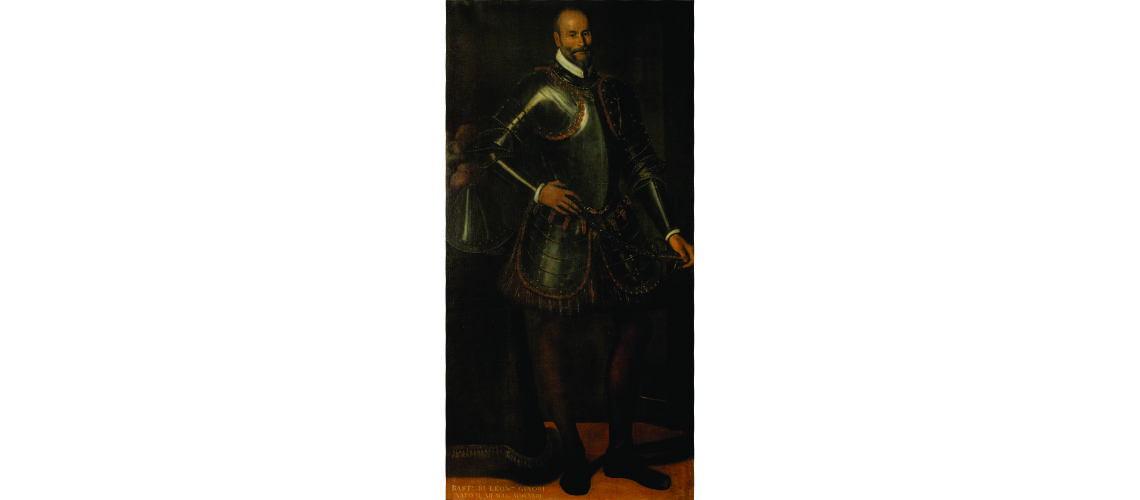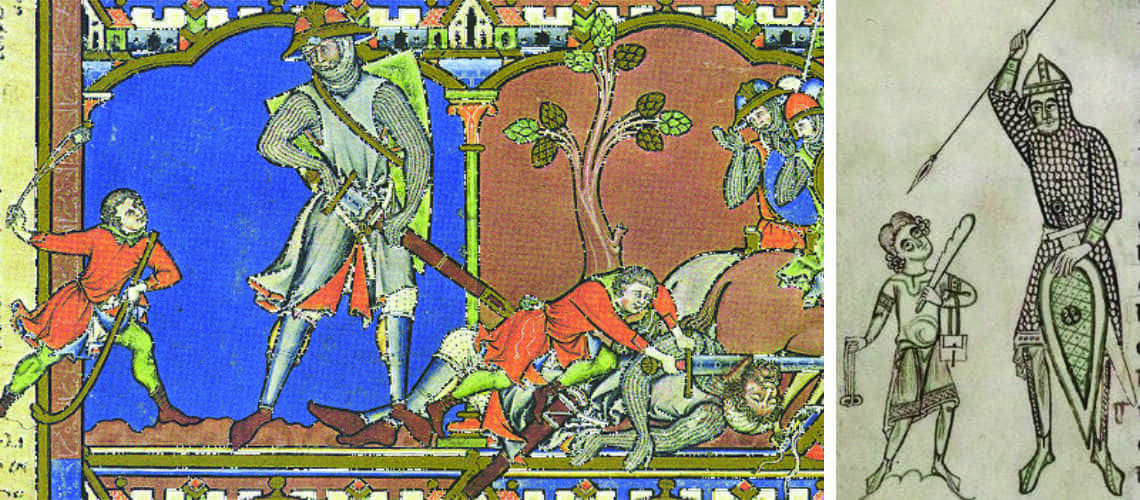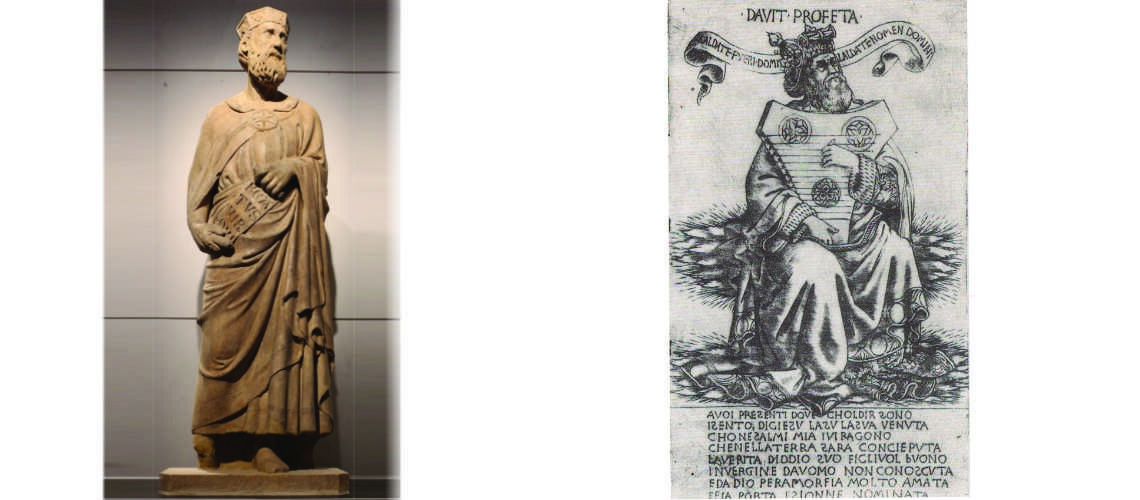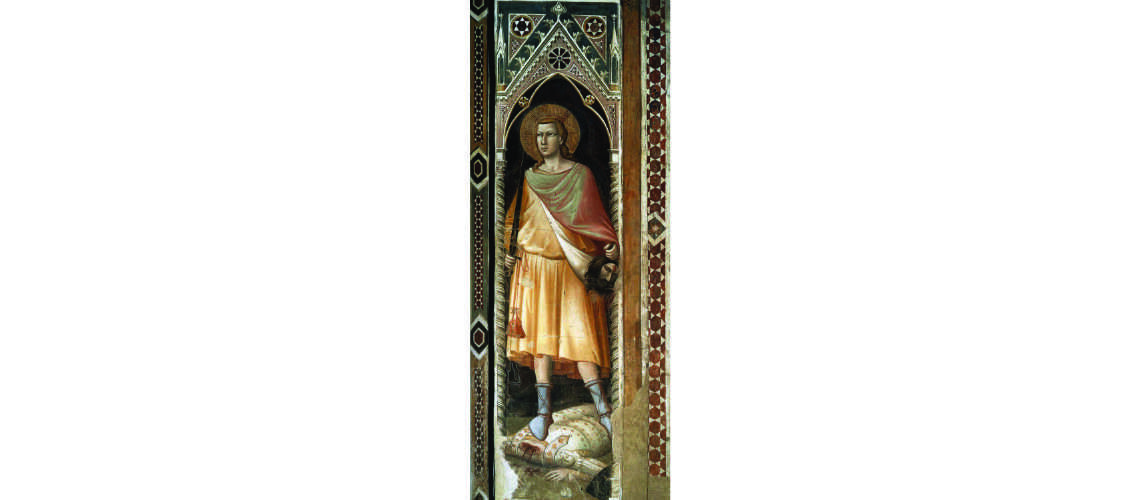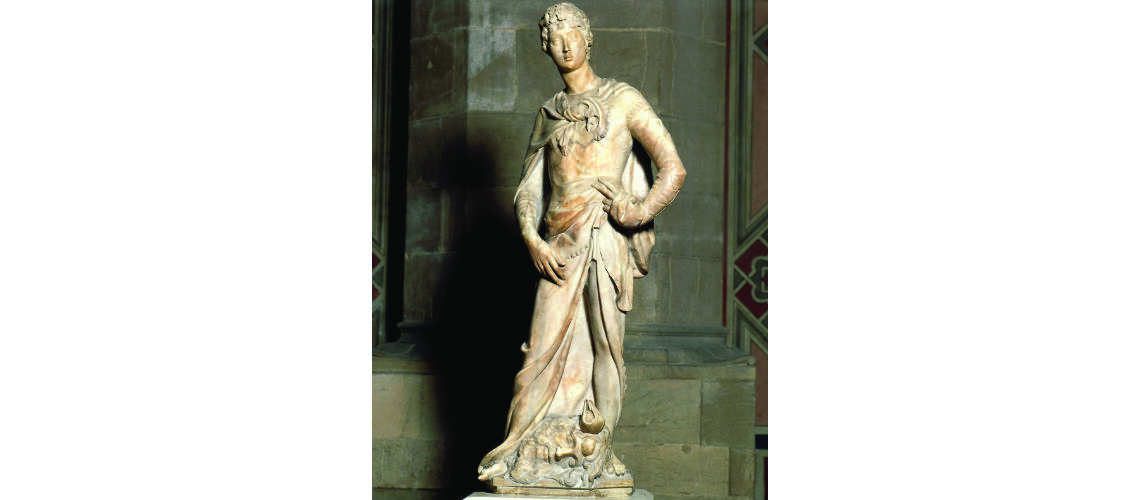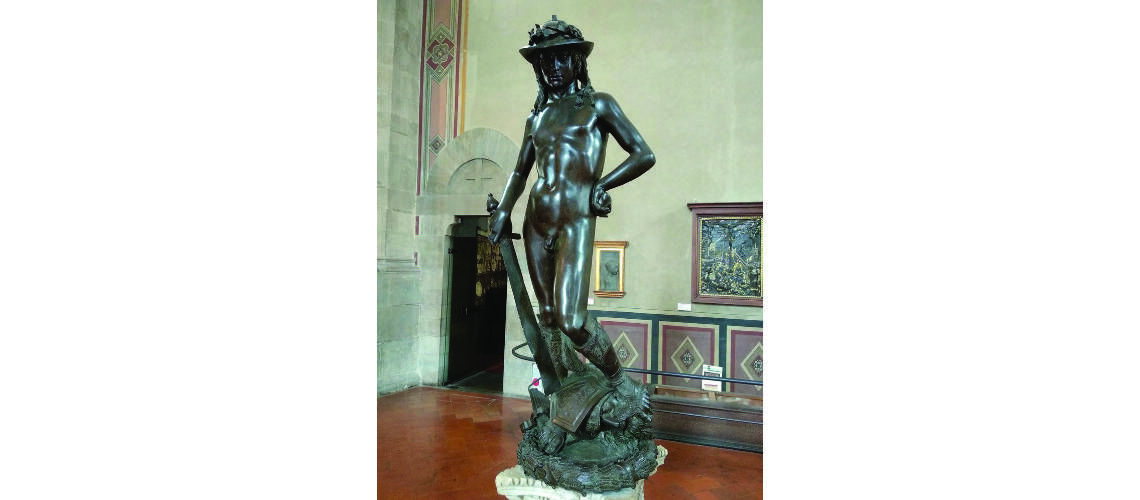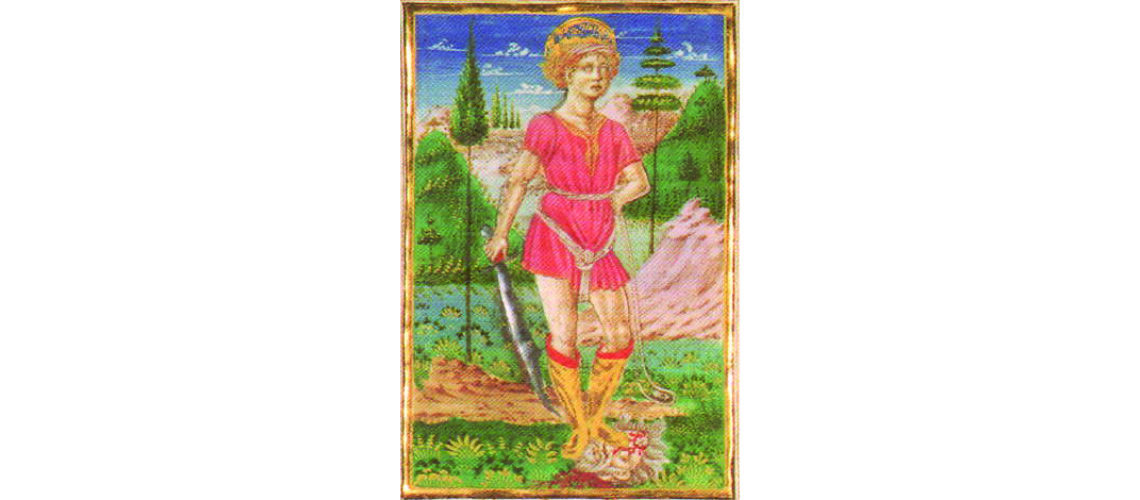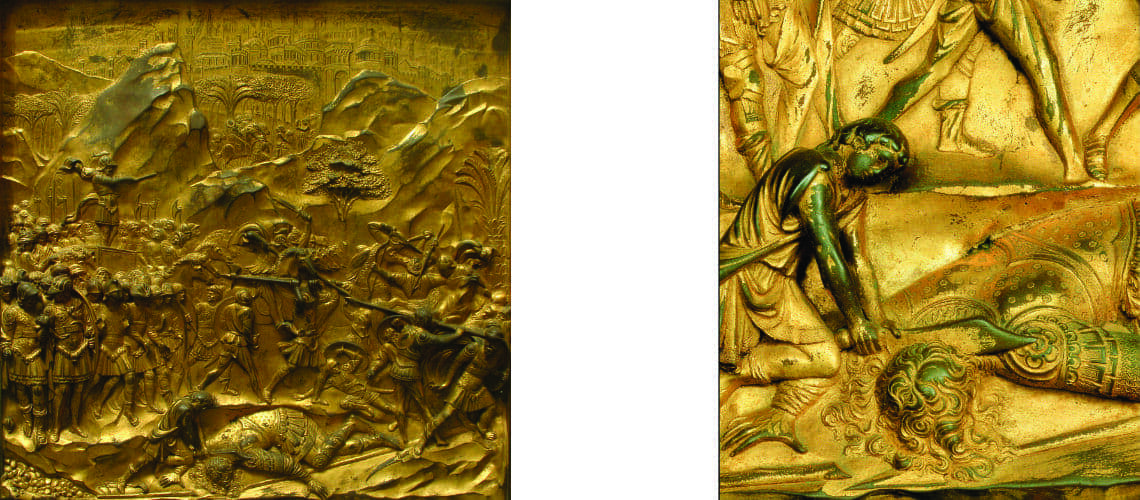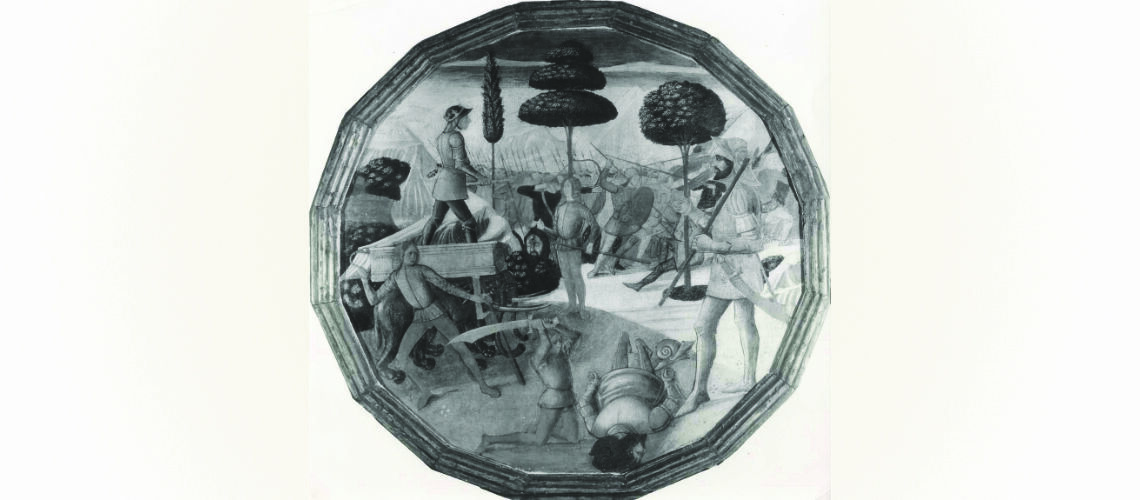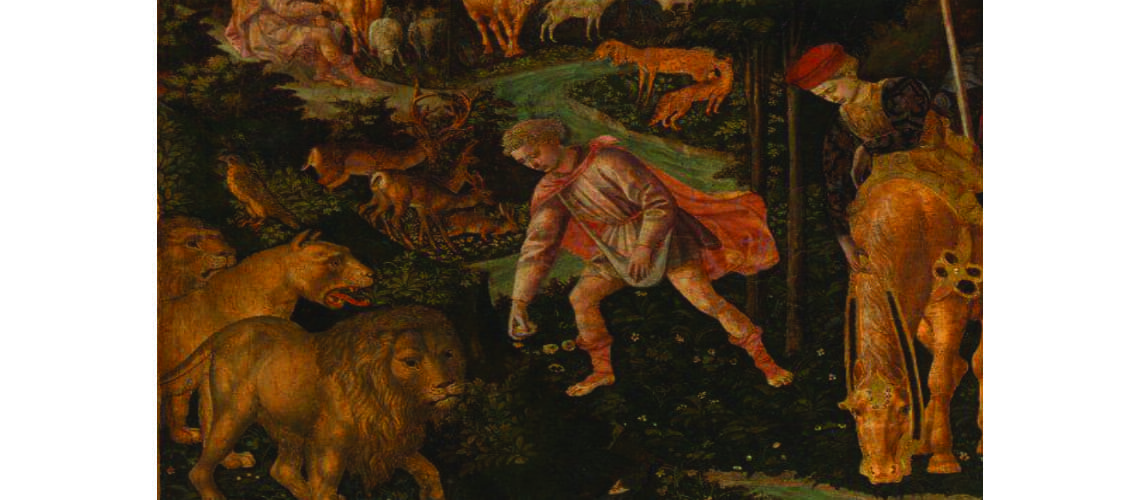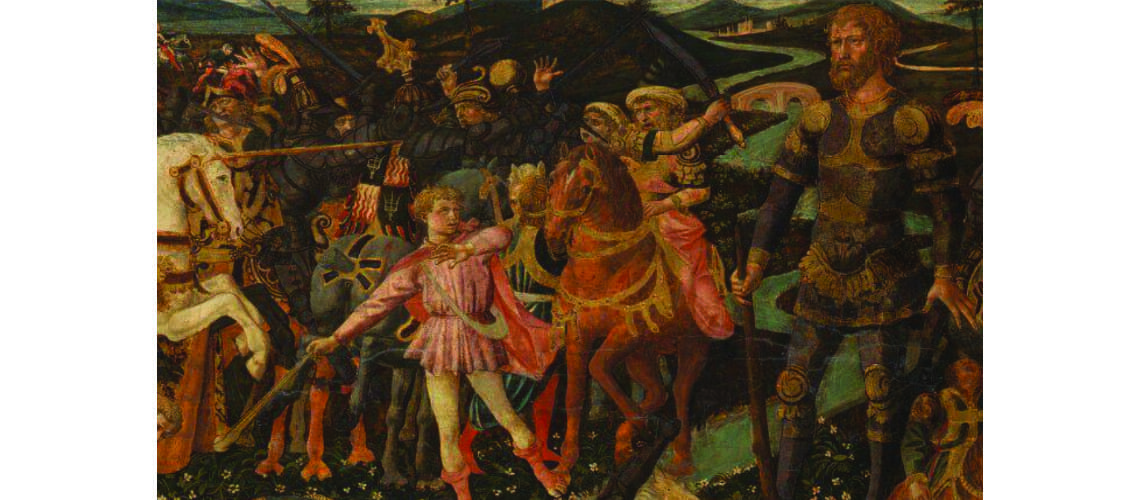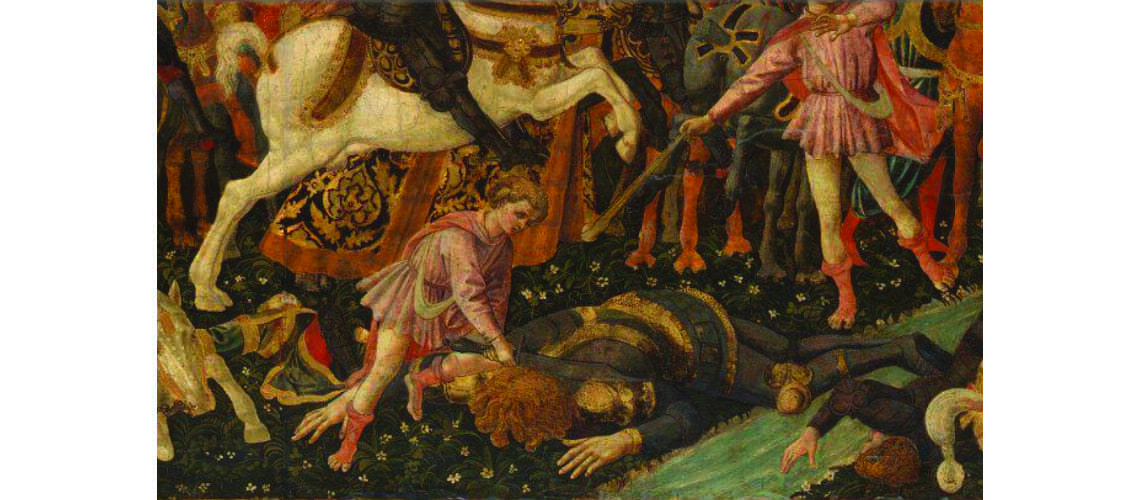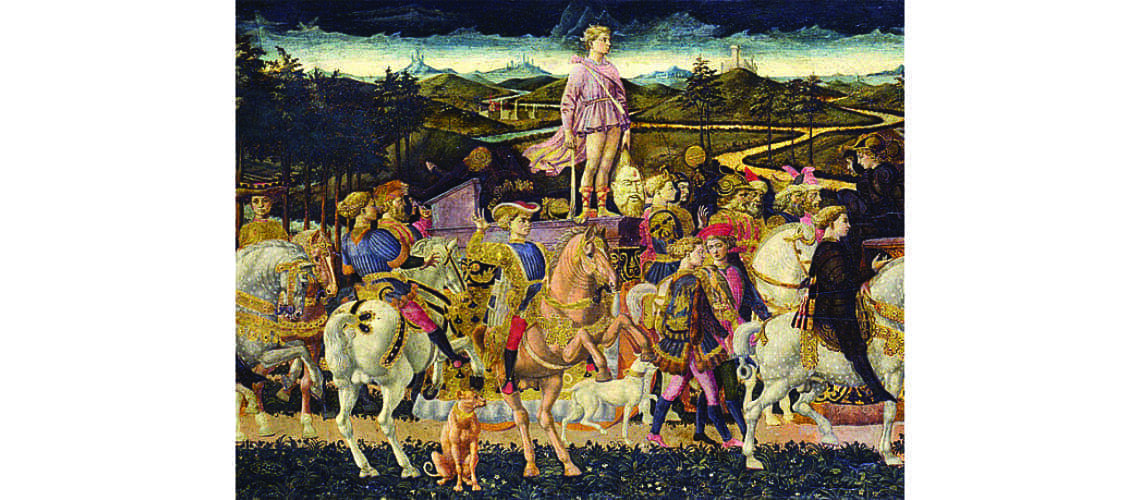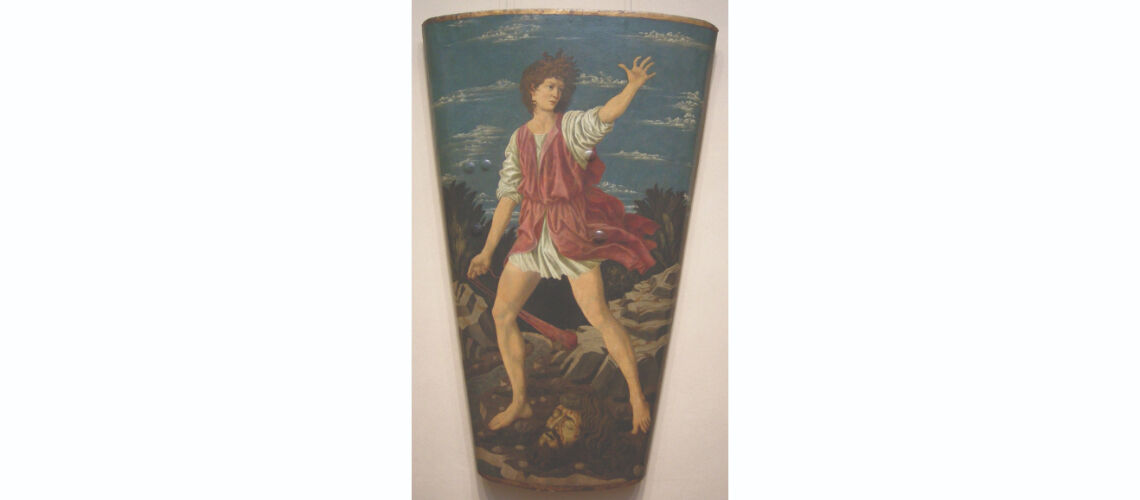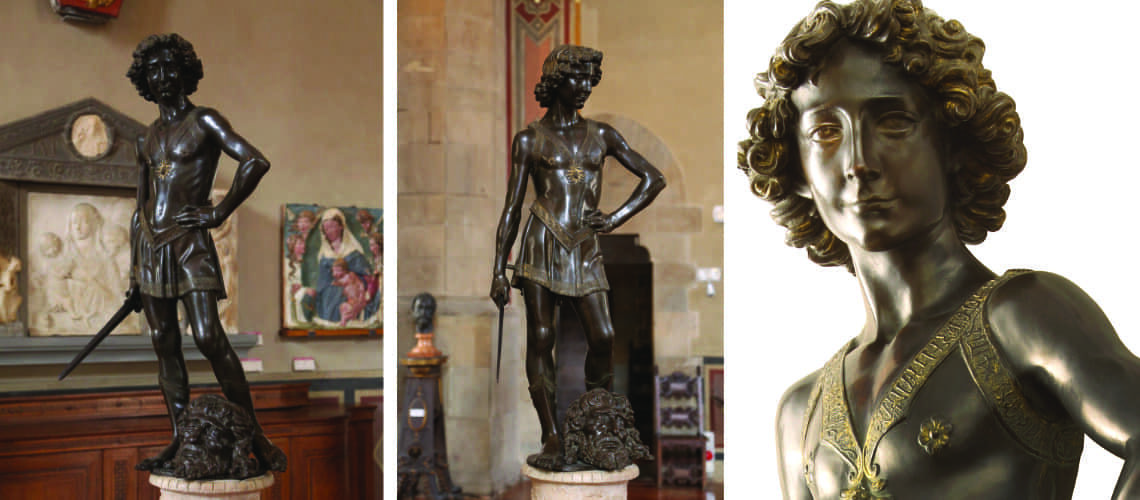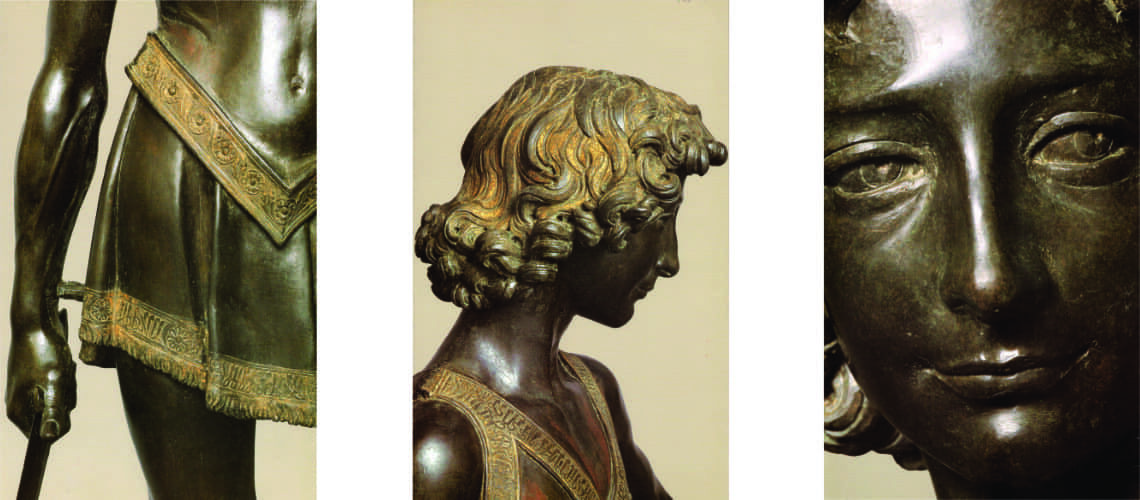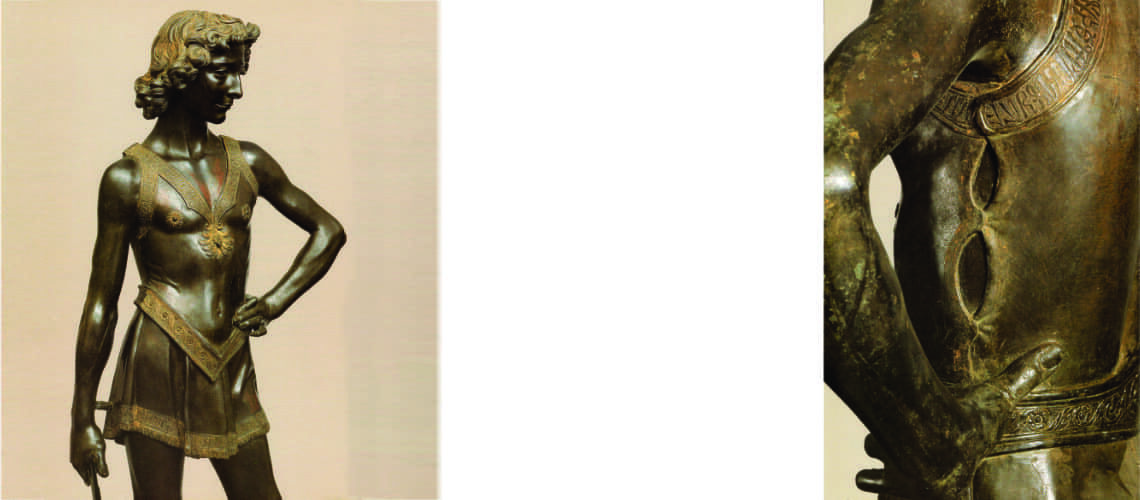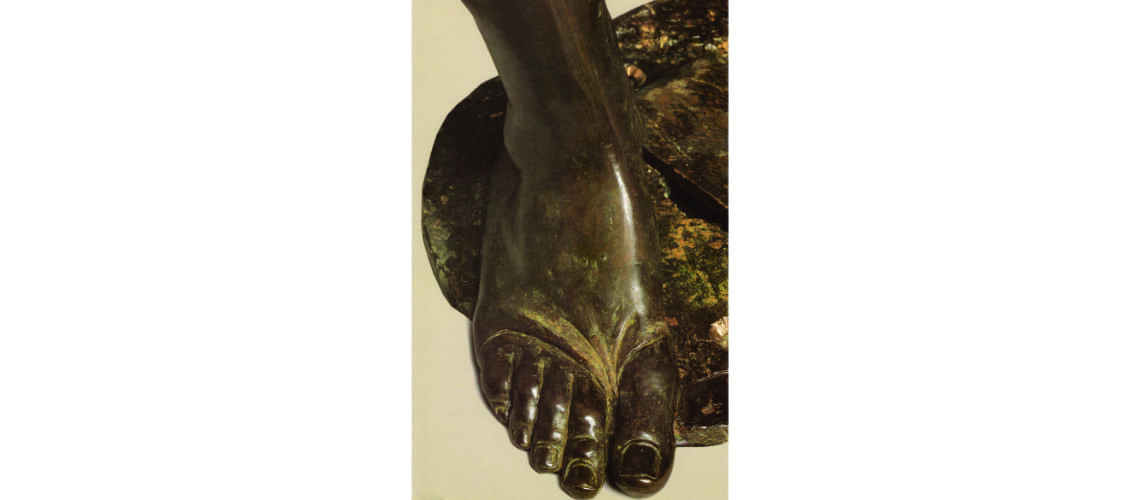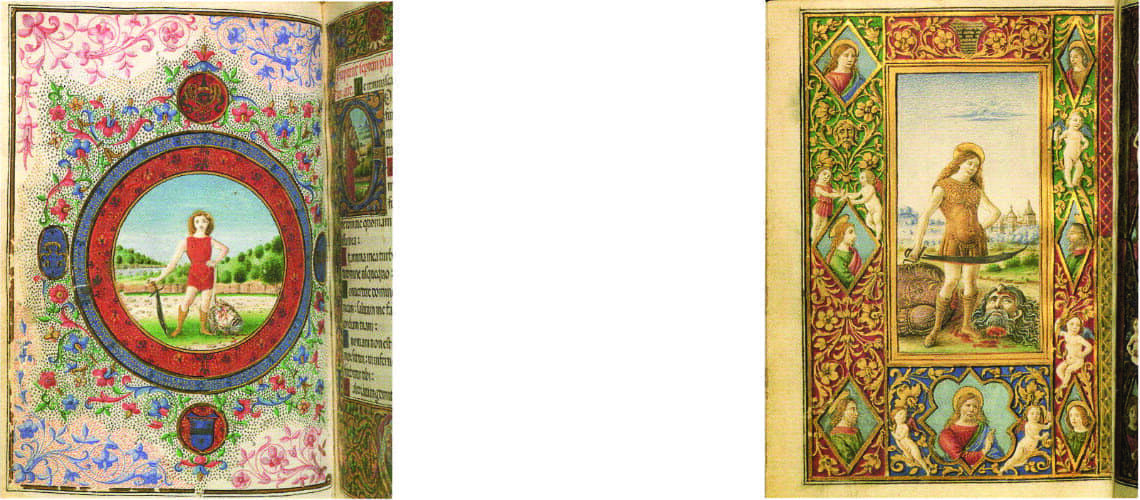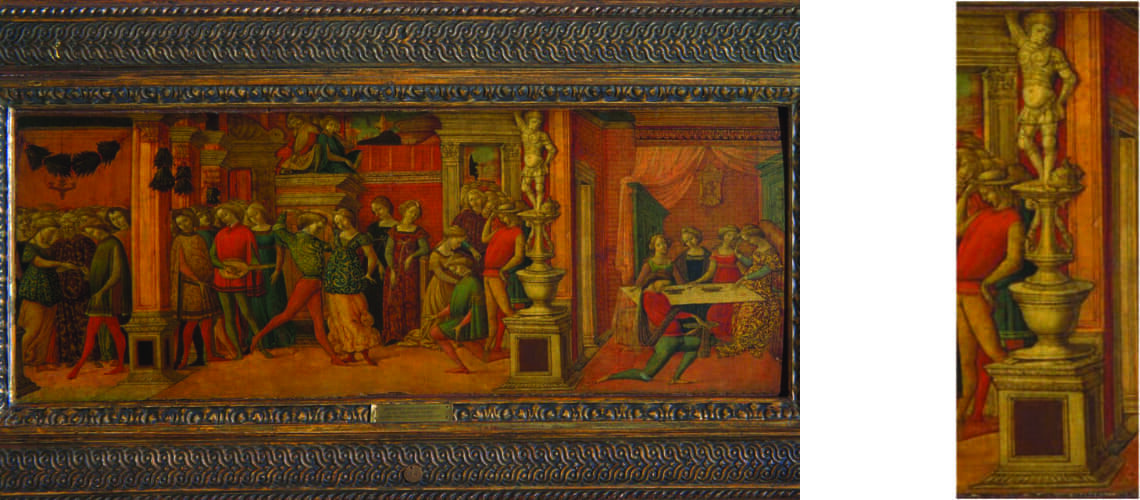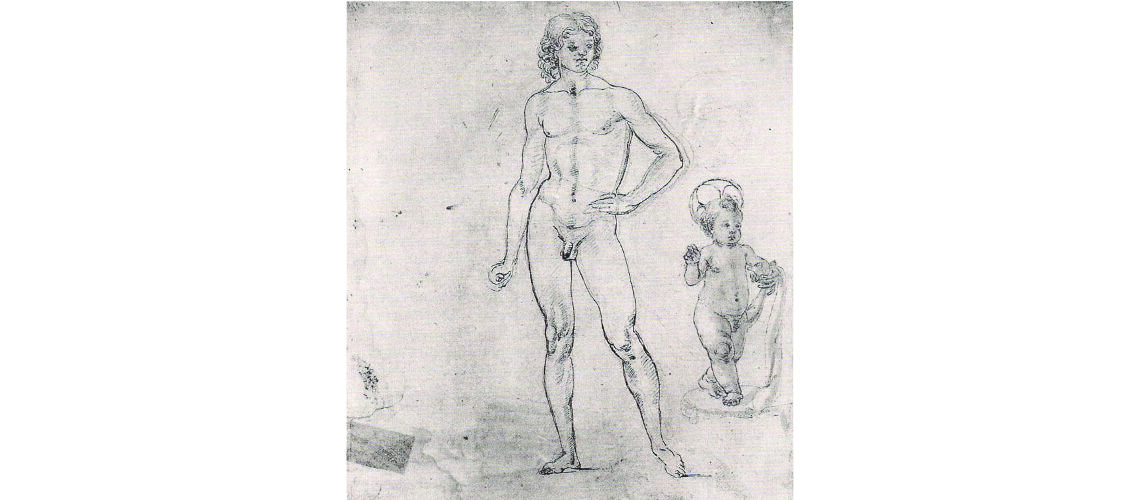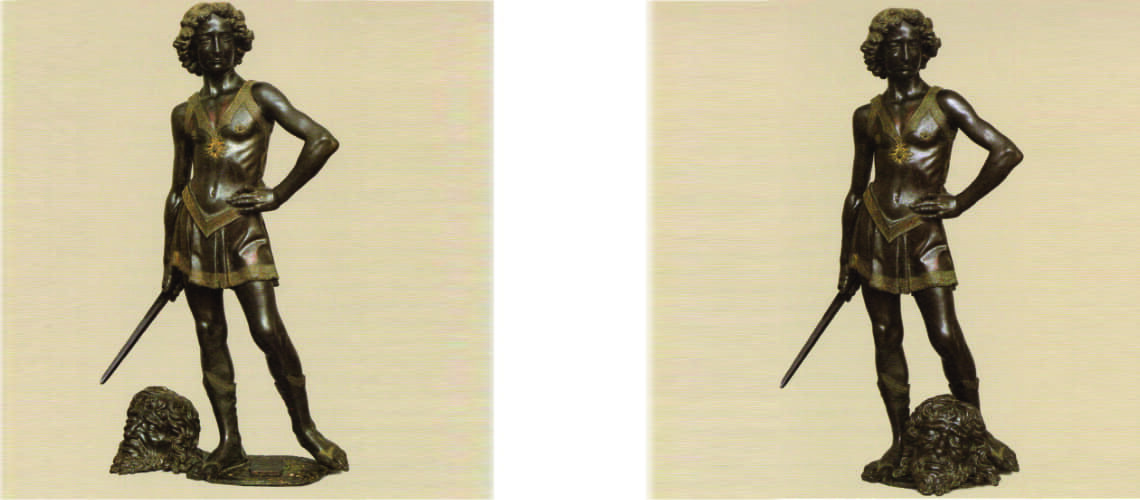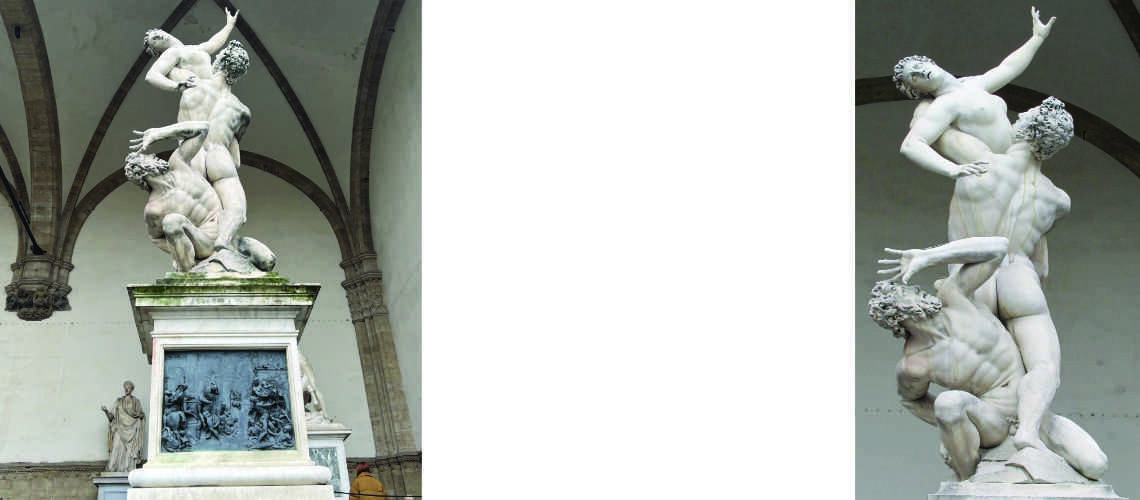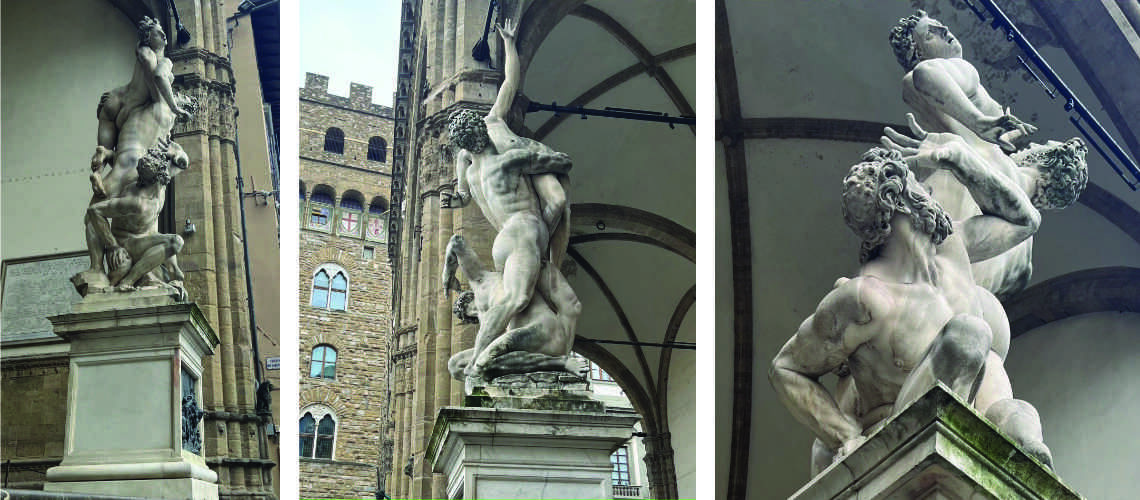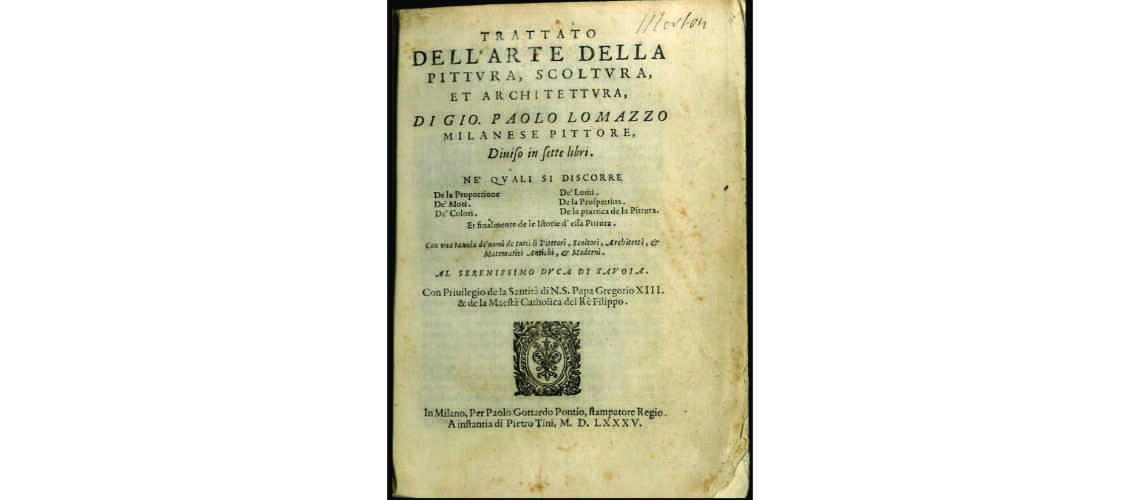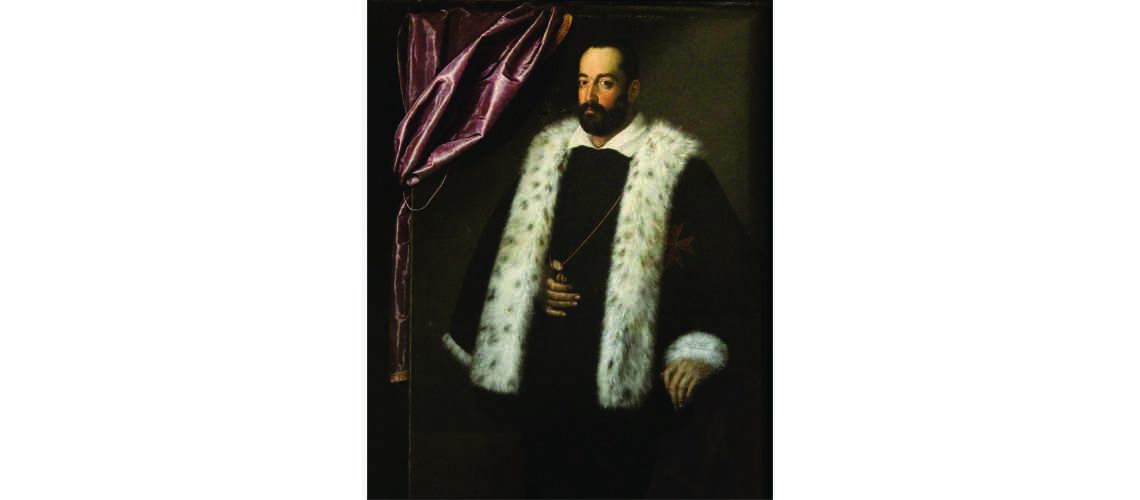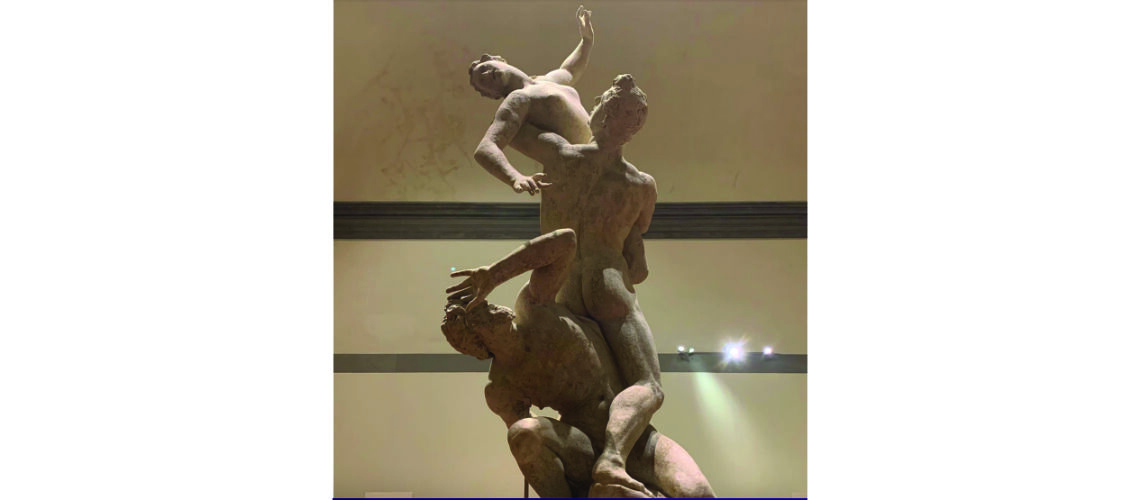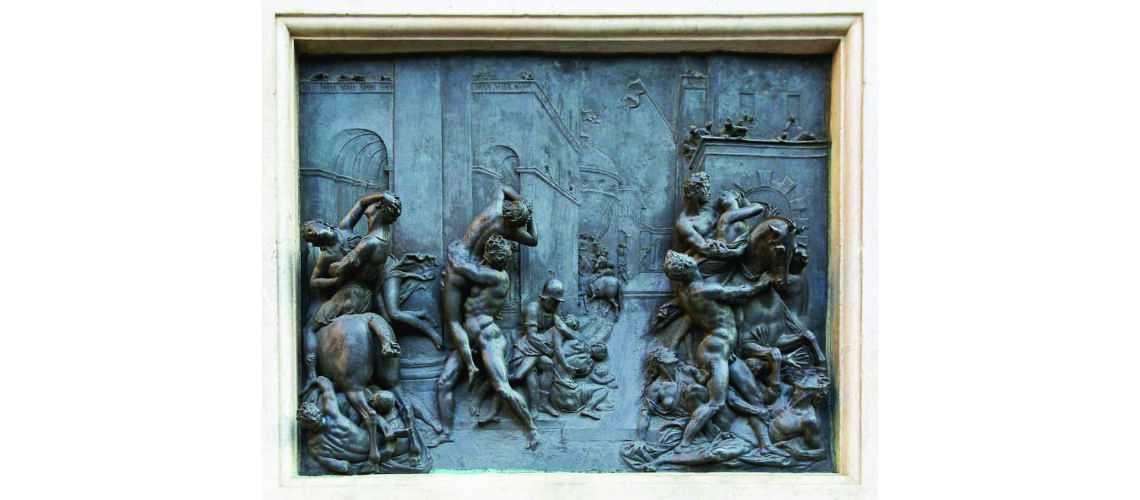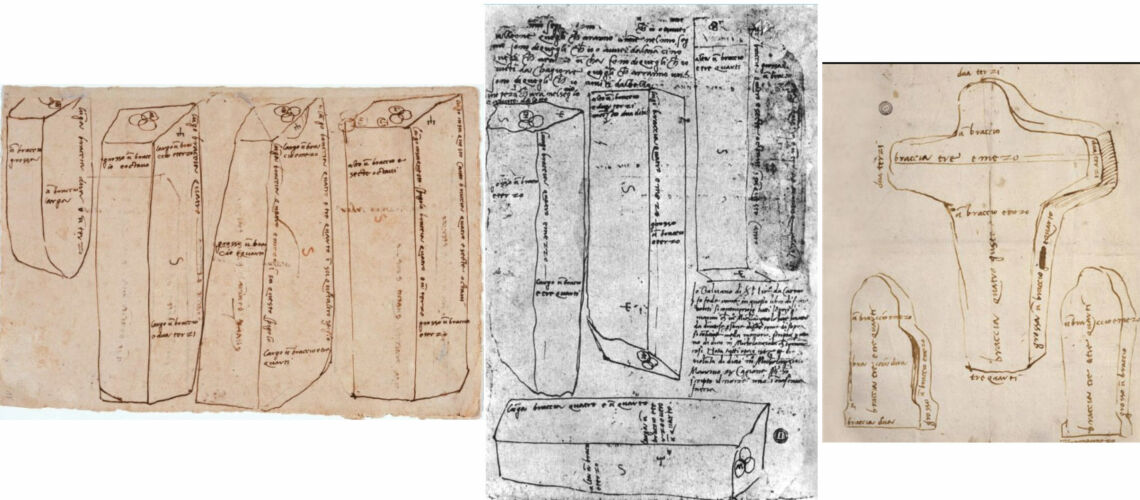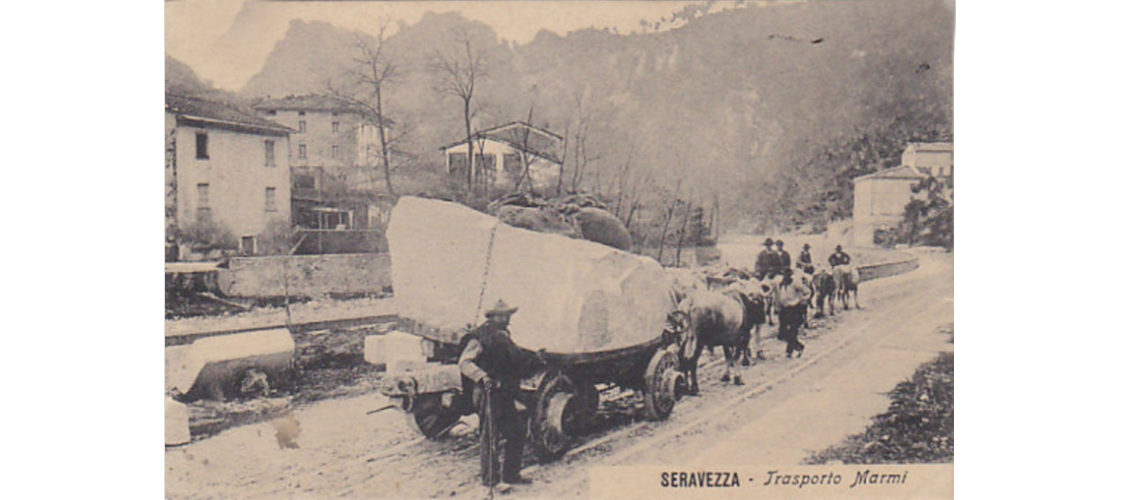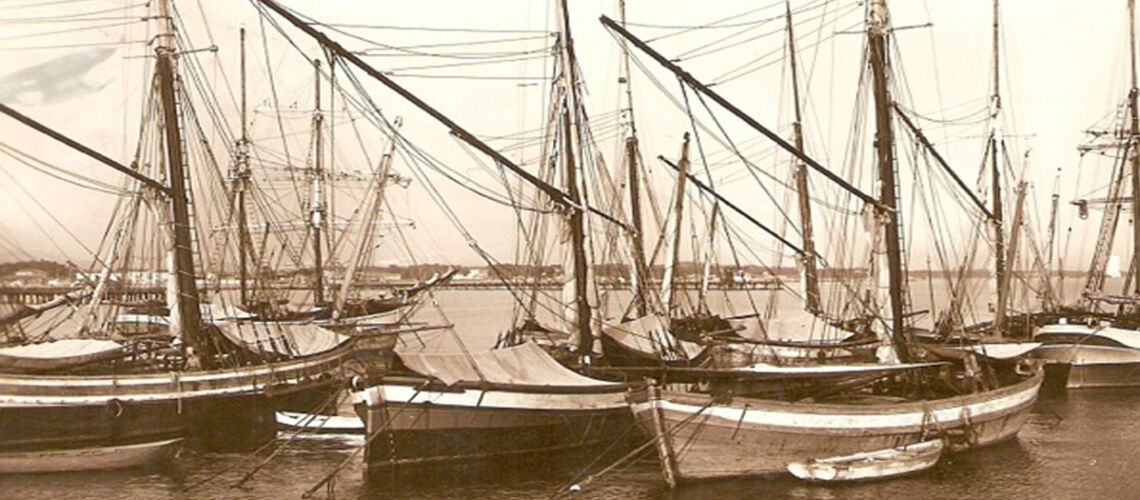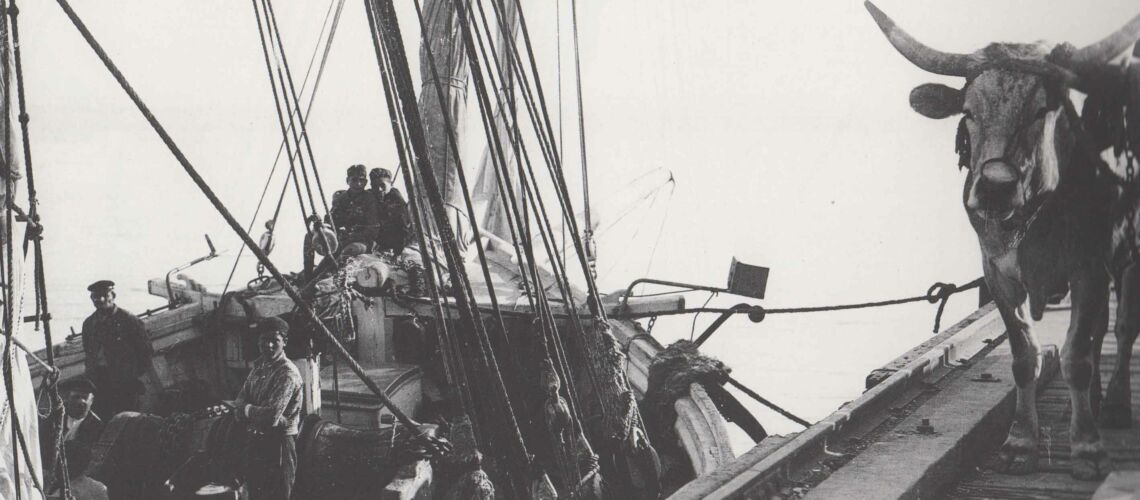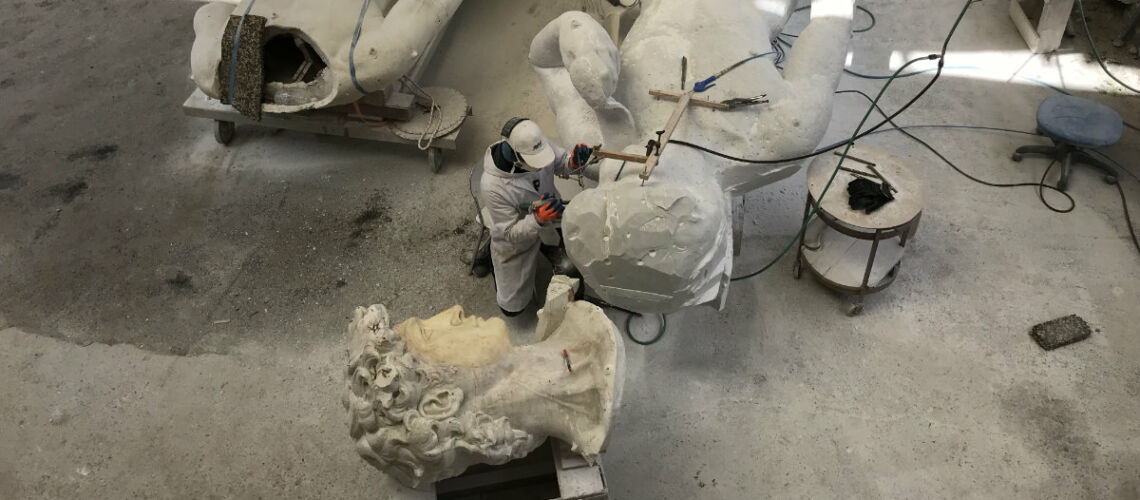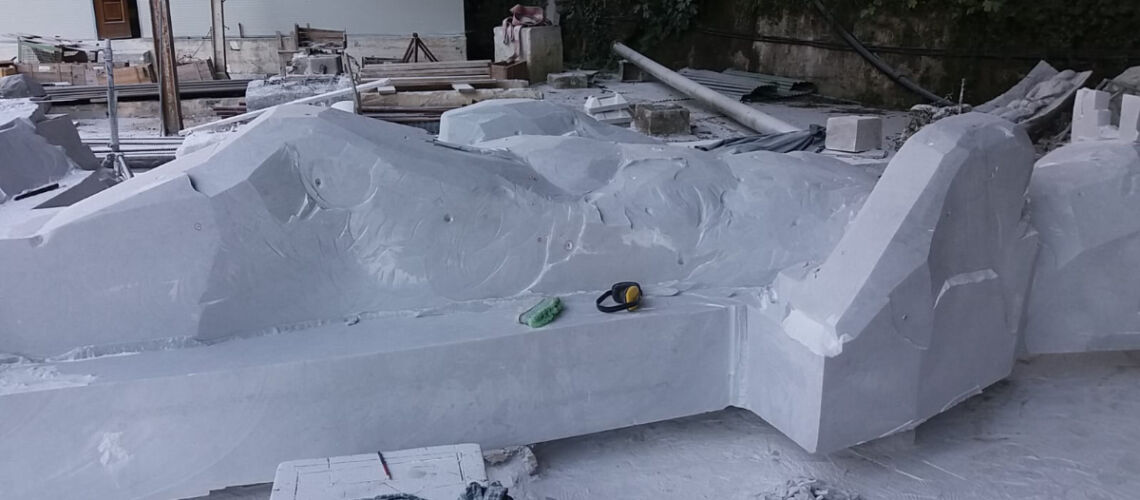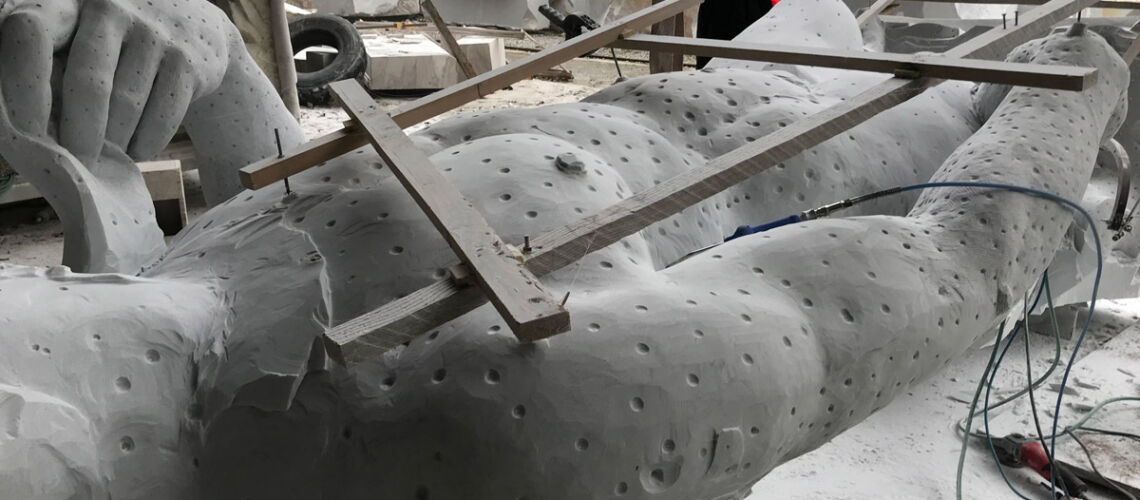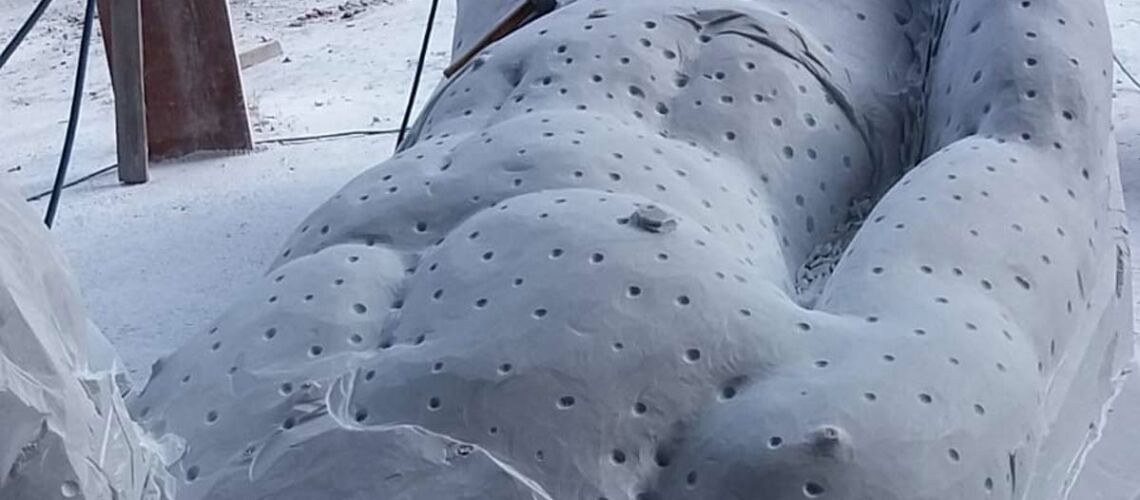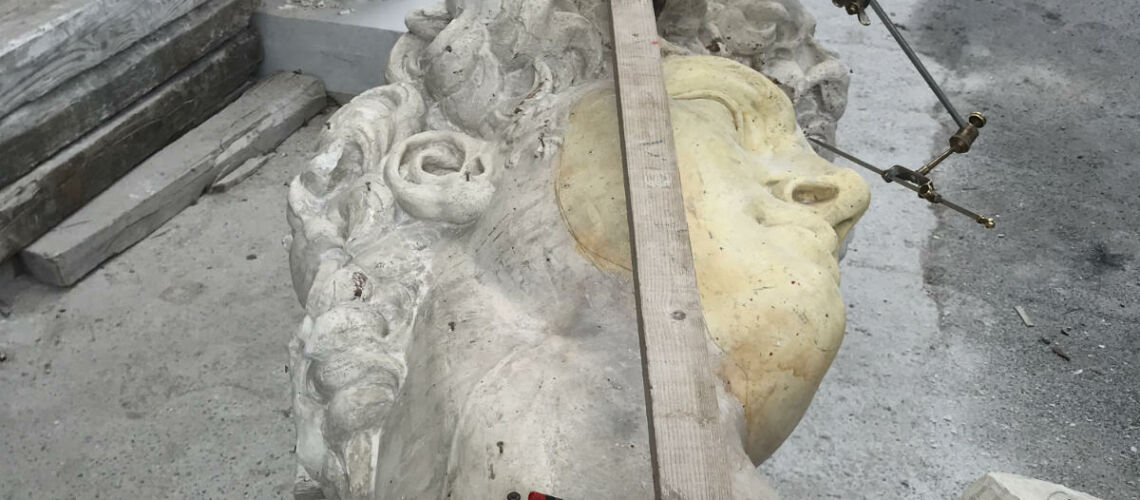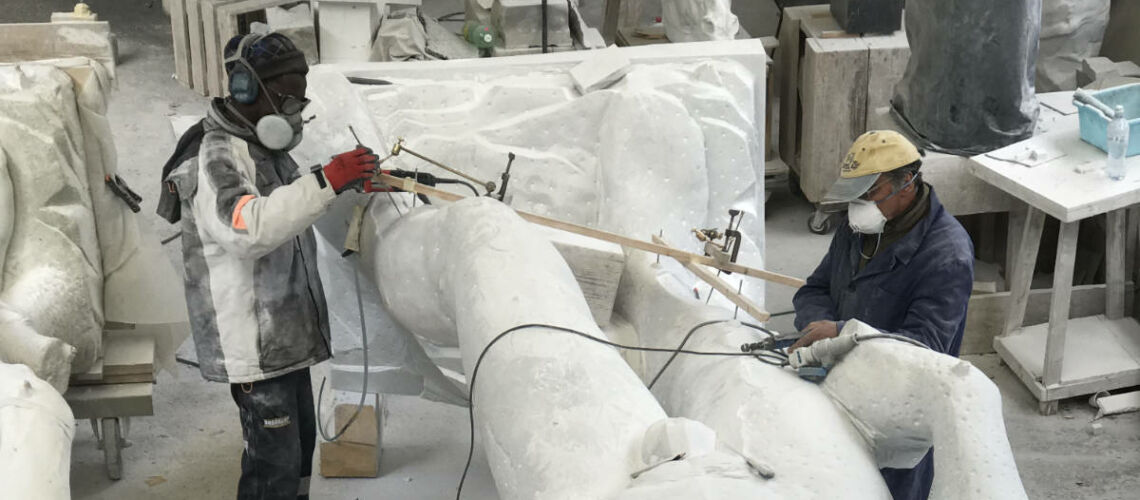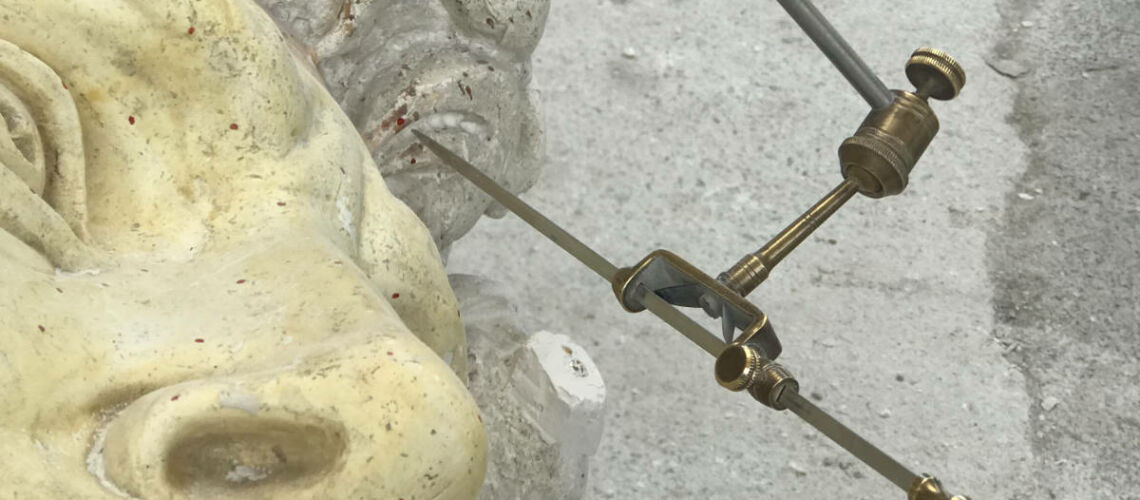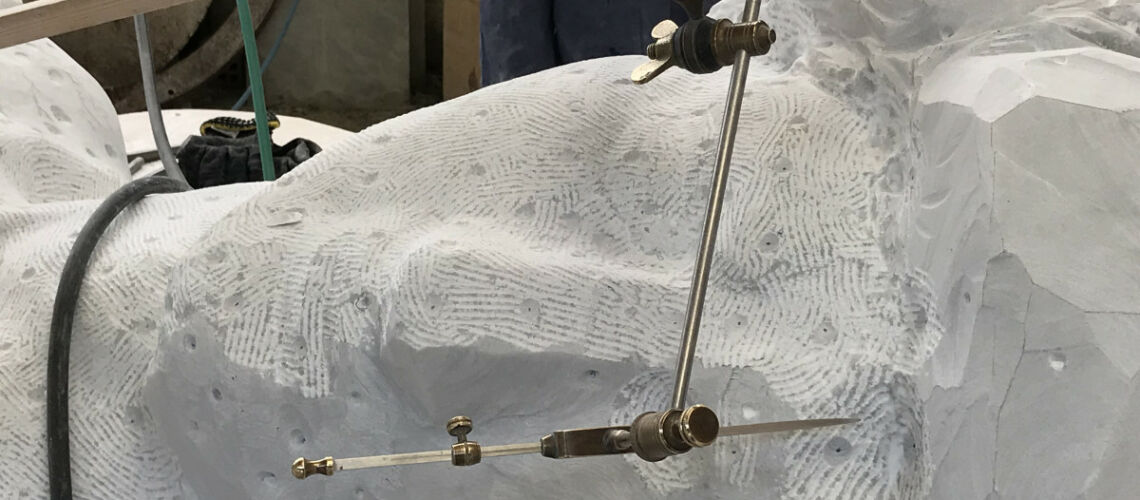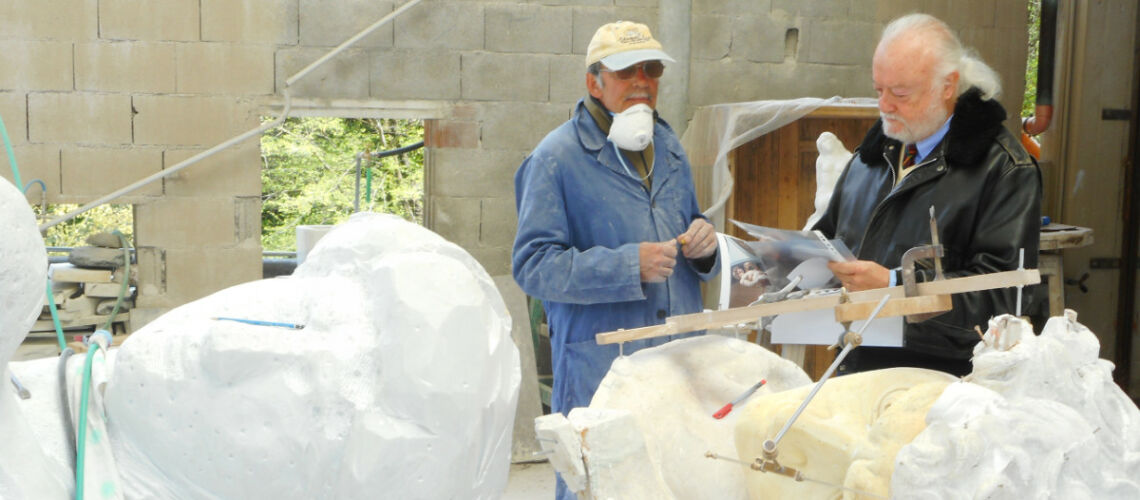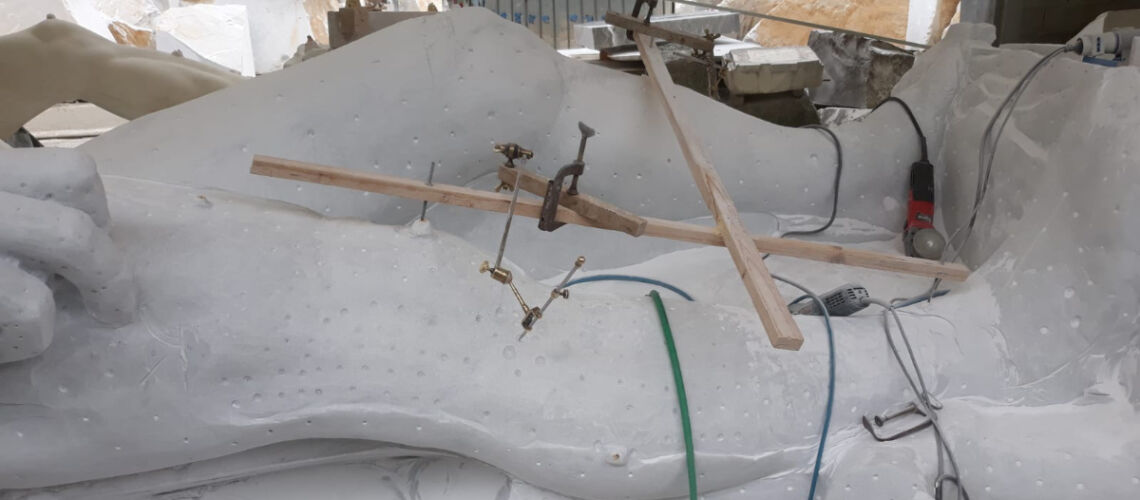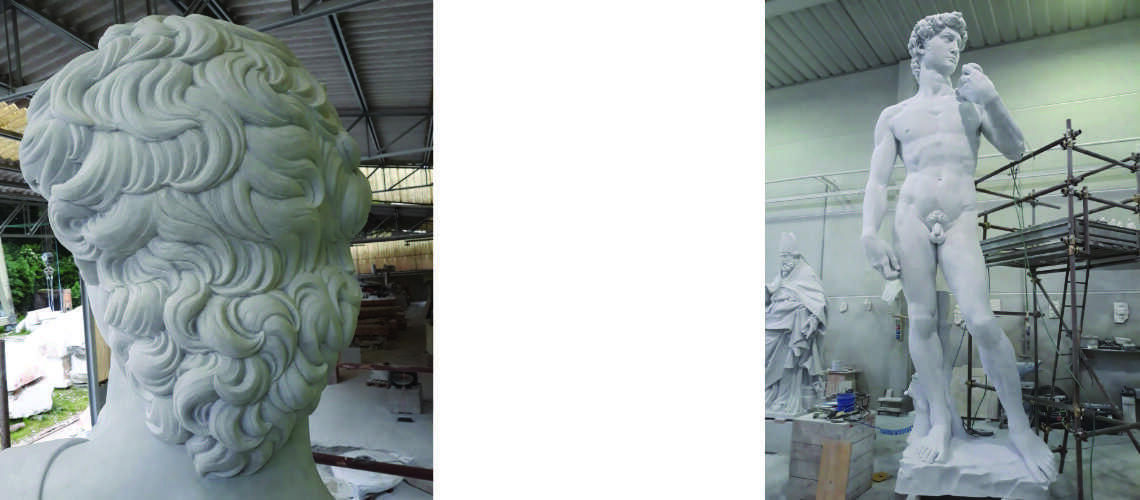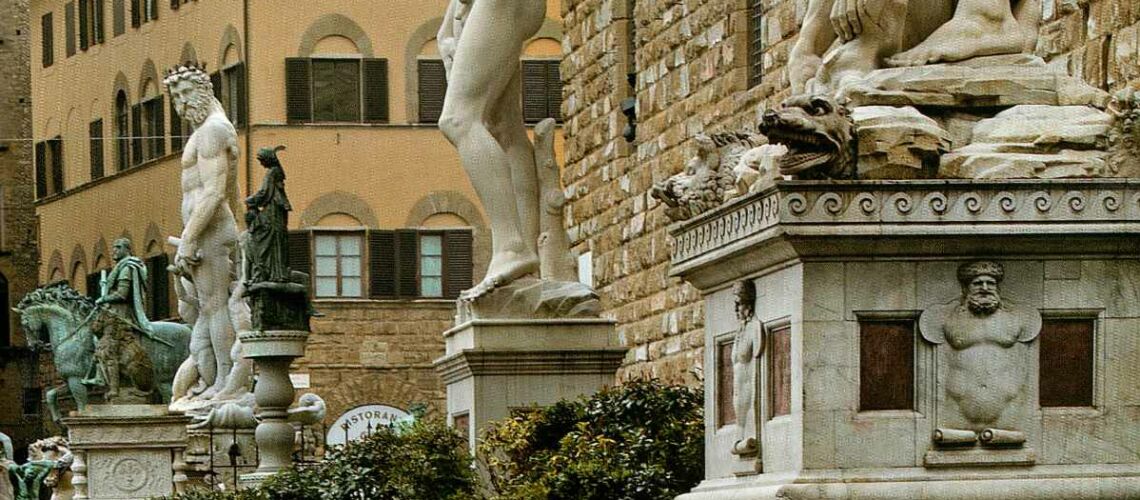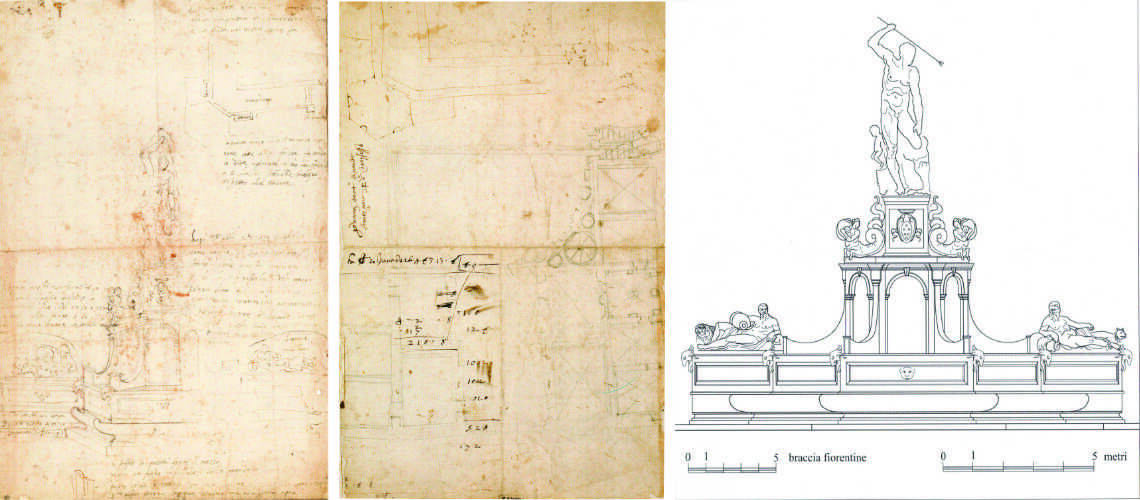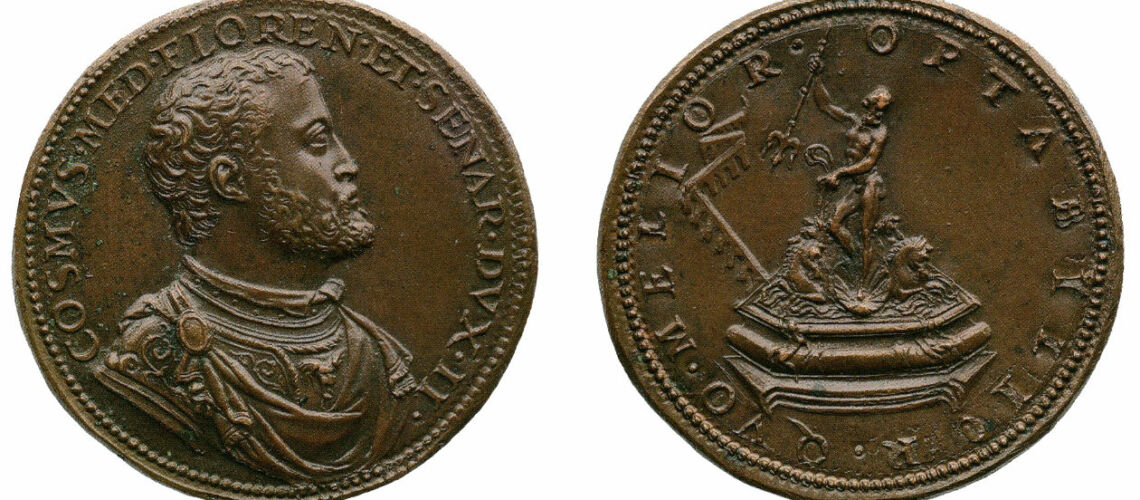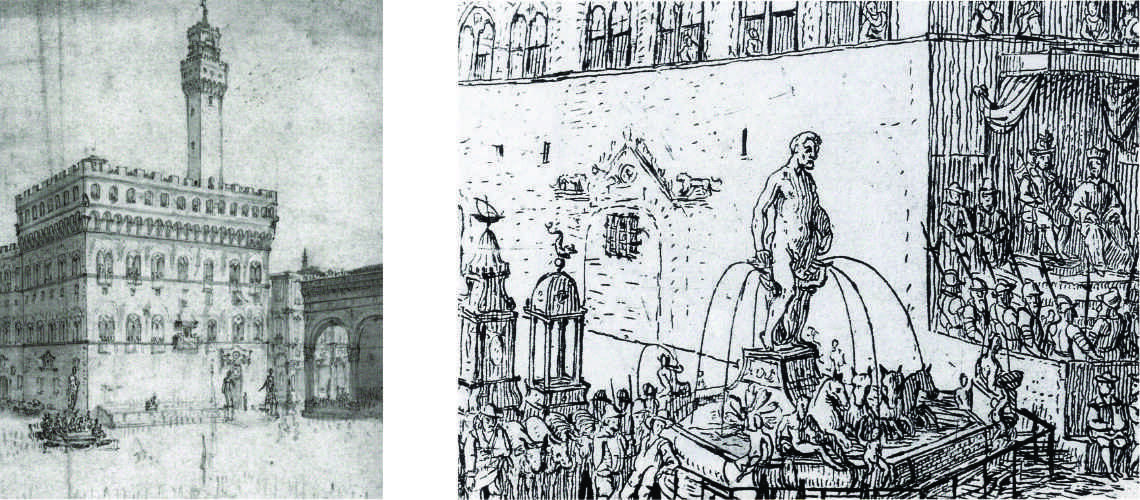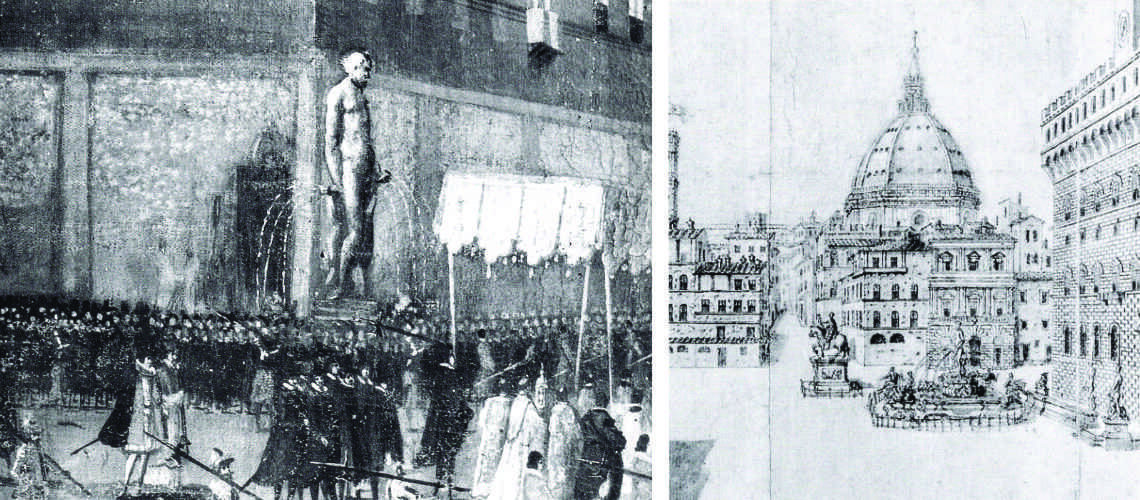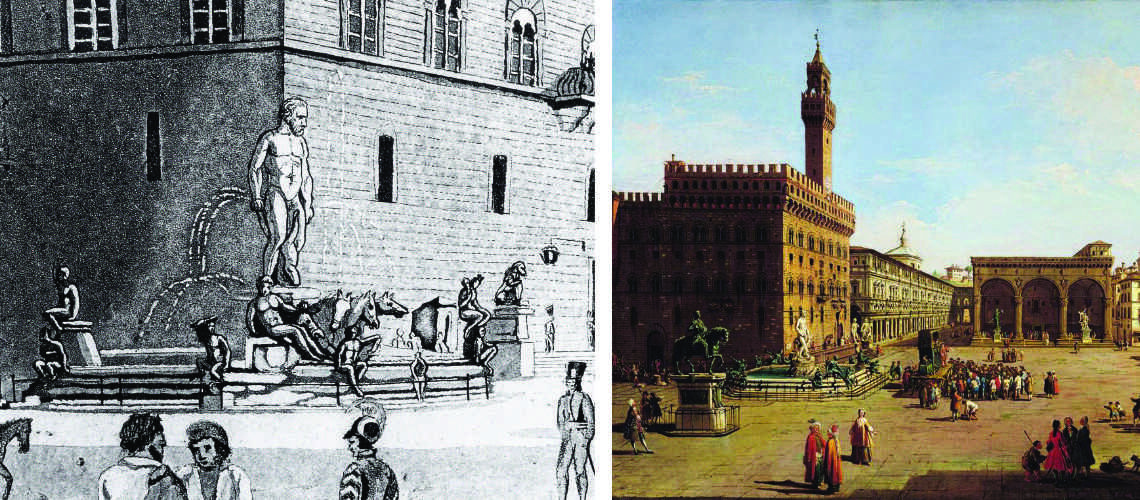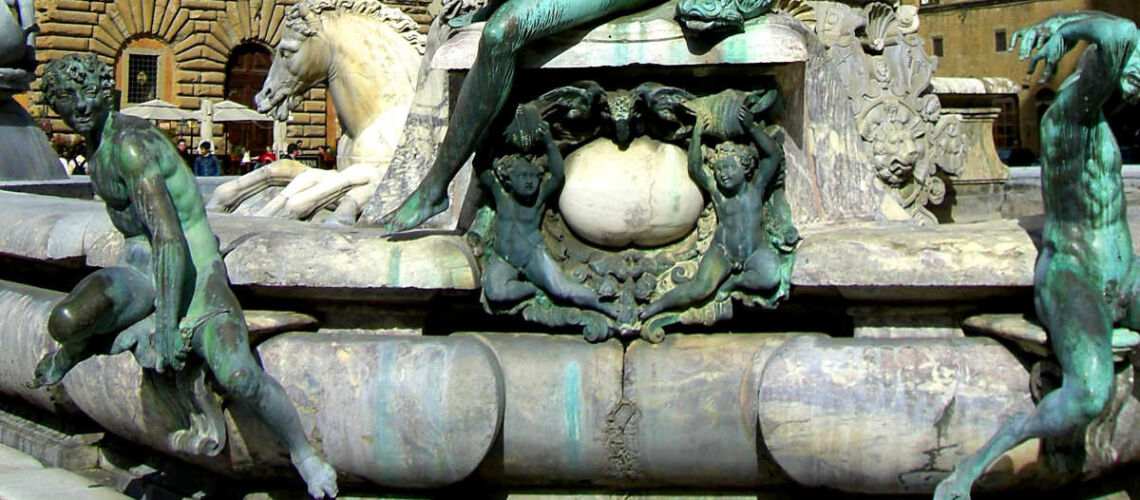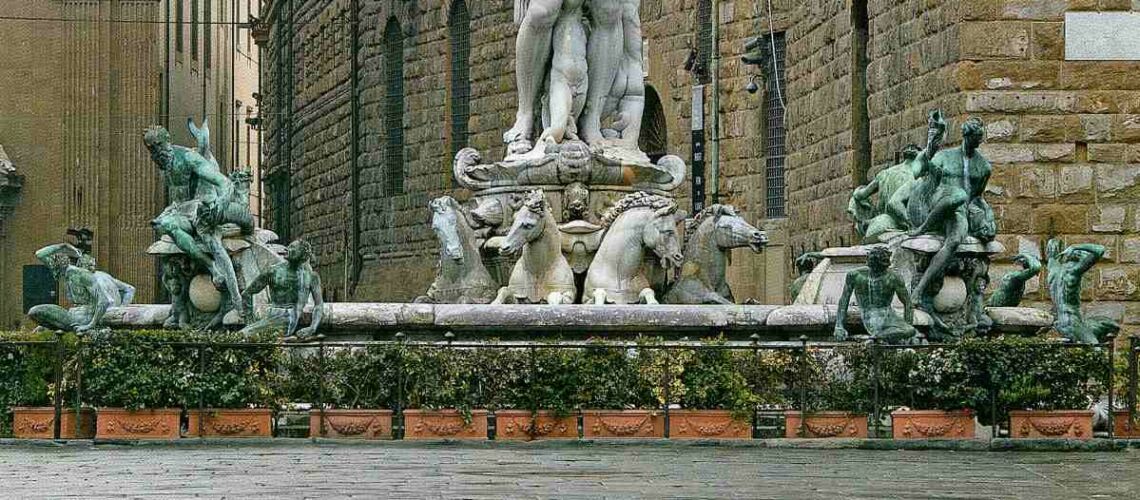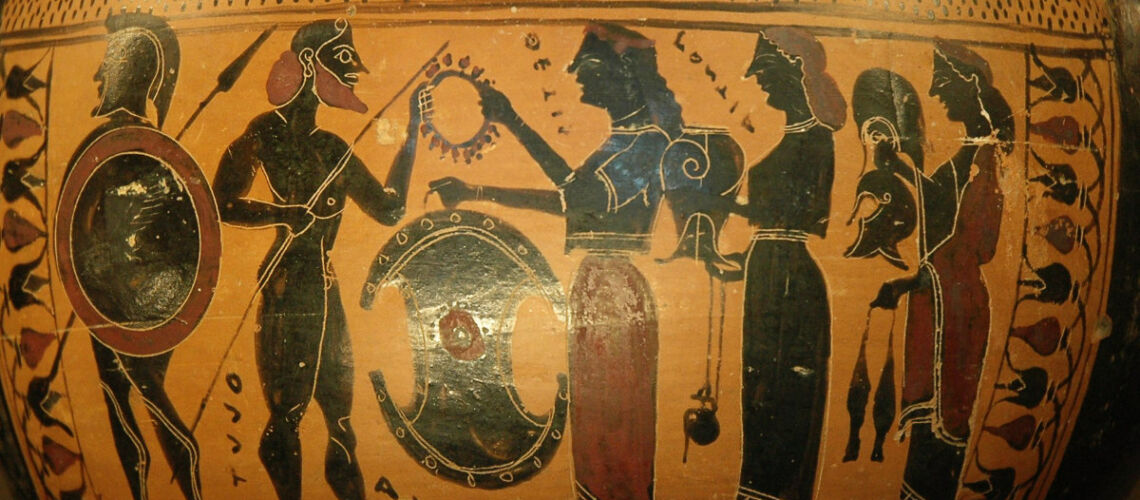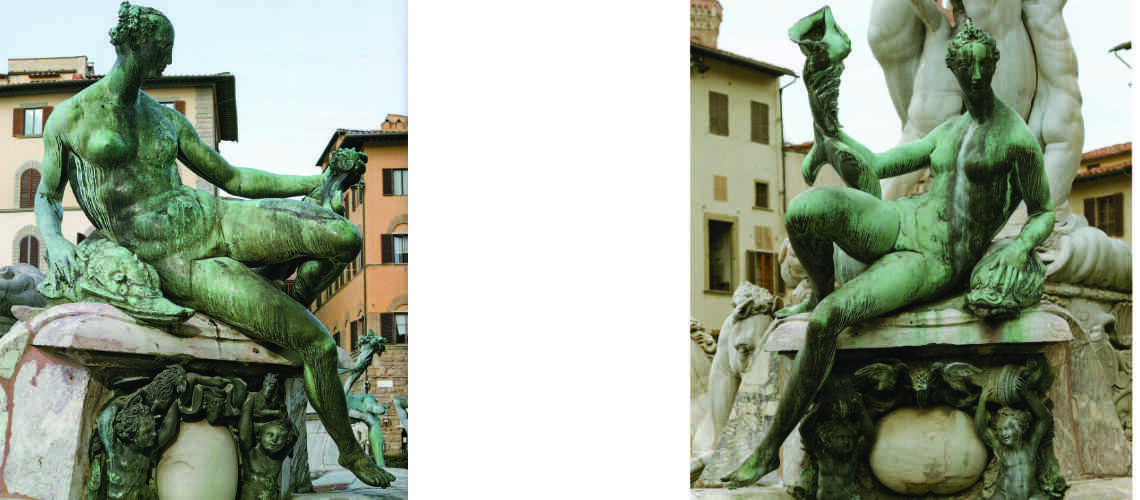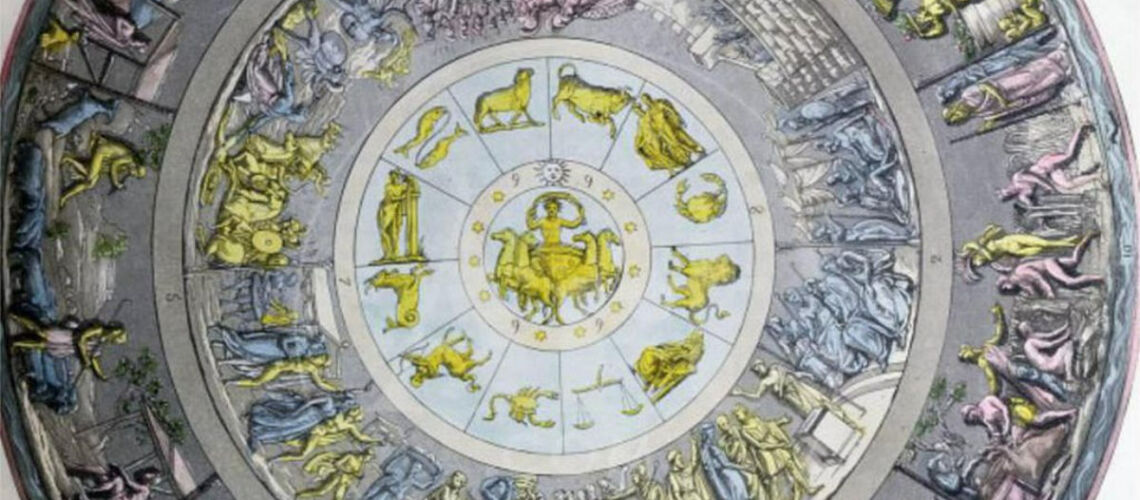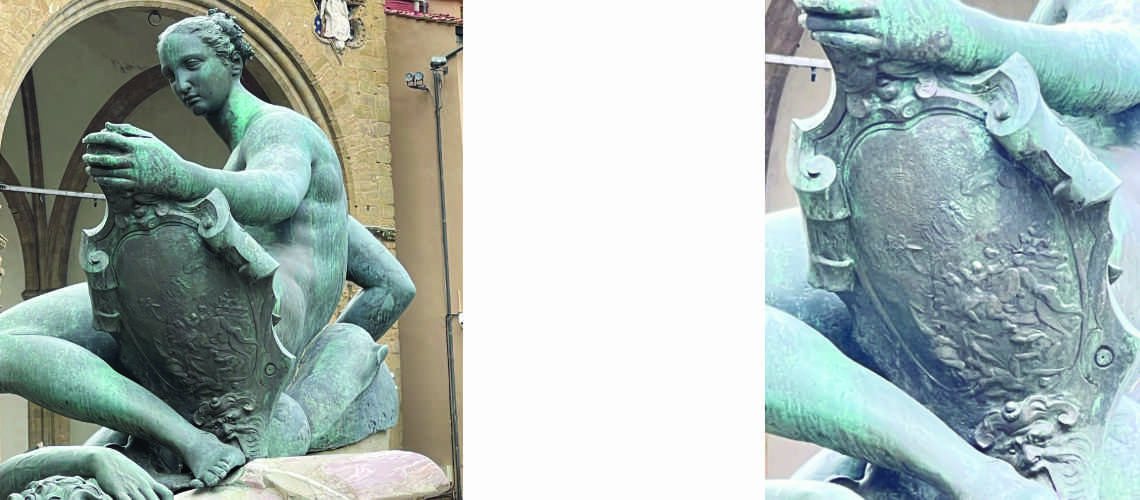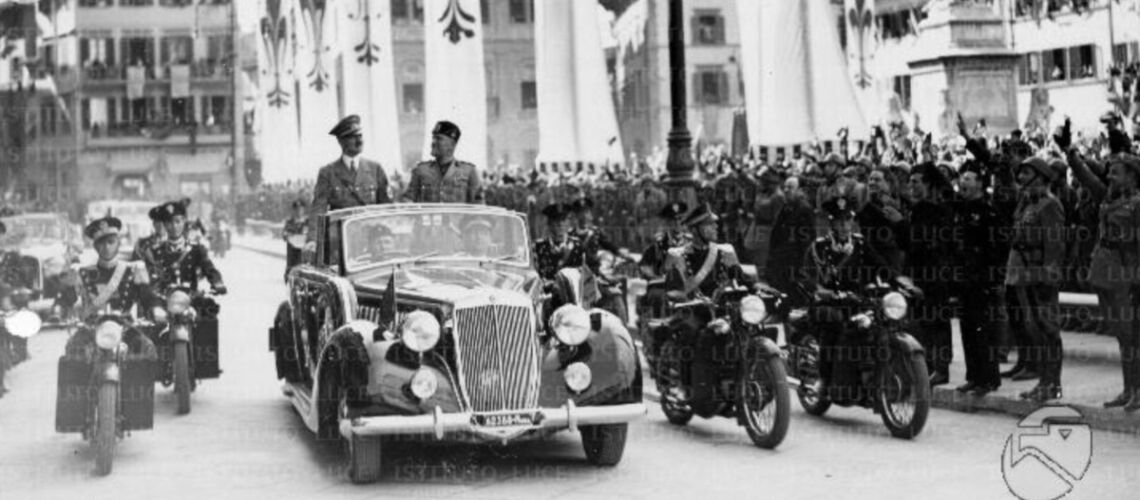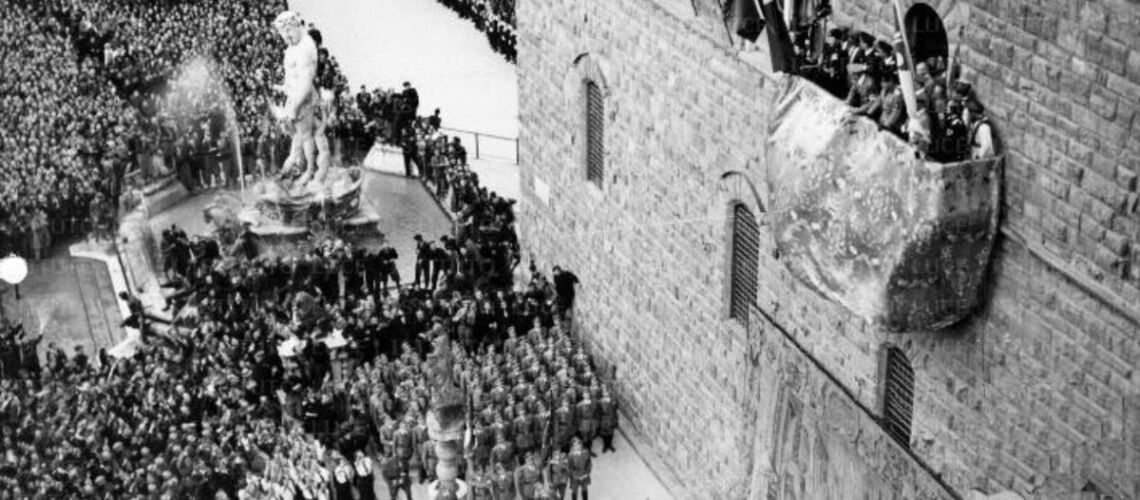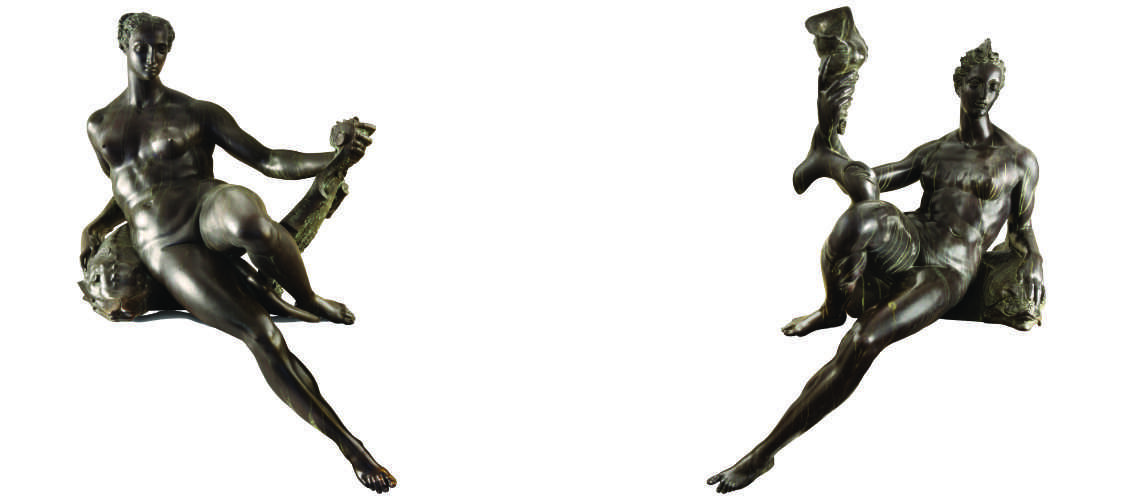Michelangelo and the Vatican Pietà
Vasari, regarding the Pietà, writes in his “Vite”:
…Alla quale opera non pensi mai scultore né artefice raro potere aggiugnere di disegno né di grazia, né con fatica poter mai di finitezza, pulitezza e di straforare il marmo tanto con arte quanto Michelagnolo vi fece, perché si scorge in quella tutto il valore et il potere dell’arte. Fra le cose belle [che] vi sono, oltra i panni divini suoi, si scorge il morto Cristo: e non si pensi alcuno di bellezza di membra e d’artificio di corpo vedere uno ignudo tanto ben ricerco di muscoli, vene, nerbi sopra l’ossatura di quel corpo, né ancora un morto più simile al morto di quello. Quivi è dolcissima aria di testa, et una concordanza nelle appiccature e congiunture delle braccia e in quelle del corpo e delle gambe, i polsi e le vene lavorate, che in vero si maraviglia lo stupore che mano d’artefice abbia potuto sì divinamente e propriamente fare in pochissimo tempo cosa sì mirabile: che certo è un miracolo che un sasso, da principio senza forma nessuna, si sia mai ridotto a quella perfezzione che la natura affatica suol formar nella carne…
[…To which work no sculptor or craftsman should ever think of the rare ability to achieve in design or grace, nor with effort ever be able to finish, clean and pierce the marble with as much art as Michelagnolo did, because in it one can see all the value and the power of art. Among the beautiful things [that] are there, beyond his divine clothes, the dead Christ is seen: and let no one think of the beauty of the limbs and the artifice of the body to see a naked man so well refined with muscles, veins and nerves above the skeleton of that body, nor yet a dead man more similar to the dead than that. Here there is a very sweet air of the head, and a concordance in the joints and joints of the arms and in those of the body and legs, the wrists and the veins worked, that in truth one marvels in amazement that the hand of an artisan could have been able to so divinely and properly to do something so wonderful in a very short time: that it is certainly a miracle that a stone, from the beginning without any form, has ever been reduced to that perfection that nature usually works hard to form in the flesh…]
The Pietà
At the age of 24, in 1499, Michelangelo executed his masterpiece, the VATICAN PIETA. The banker Jacopo Galli had become a great admirer and close friend of him, so much so that he had hosted him in his palace in Rome. He had also become his guarantor and intermediary, and it was thanks to Galli that in 1496 Michelangelo had the commission of the Pietà for Jean de Bilhères, abbot of San Dionigi, ambassador to Rome of Charles VIII of France to Pope Alexander VI.
Charles VIII of France, French School, Palace of Versailles
Having received a deposit of 150 ducats out of the agreed upon 450 ducats in 1497, he went on horseback to the Carrara marble quarries to find the right marble. Having returned to Rome, on 27 August 1497 he signed the official contract in the presence of Galli, with the commitment to complete the work in one year, a contract which stated:
Et io Jacopo Galli prometto al reverendissimo Monsignore che lo dicto Michelangelo farà la dicta opera in fra un anno e sarà la più bella opera di marmo che sia oge in Roma, e che maestro niuno la farìa megliore oge.
Nel contratto di allogazione era stato specificato che sarebbe stata Una Pietà di marmo, cioè una Vergine Maria vestita con un Cristo morto nudo in braccio.
[And I, Jacopo Galli, promise the most reverend Monsignor that the said Michelangelo will do the said work in a year’s time and it will be the most beautiful marble work of any time in Rome, and that no master will do it better than any other.
In the contract it was specified that it would be a marble Pietà, that is, a dressed Virgin Mary with a naked dead Christ in her arms.]
He kept his commitment by delivering the masterpiece in 1499, which was taken to Santa Petronilla where the ambassador wanted to be buried.
In 1517 the Pietà was moved to St. Peter’s Basilica in the Vatican, where it changed places several times, until in 1749 it was placed in the first chapel on the right of the nave of the basilica where it still resides today.
Michelangelo, Vatican Pietà, St. Peter’s Basilica, Vatican City
The beautiful face of the Madonna portrayed as a young woman (Virgin Mother, Daughter of your Son, Dante, first verse of canto XXIII of Paradise) at the age in which she conceived him, maintains a composed pose in pain as she looks at the body of her Son.
Christ is completely released on the knees of the Mother who does not directly touch the sacred body of her son, an edge of the shroud is placed between her right hand and his body. The Madonna’s left hand has a gesture of desperate question.
The rock on which she sits is Mount Golgotha, as the biographer Condivi says in the “Life of Michelagnolo Buonarroti” published in Rome in 1553:
…A sedere sul sasso, dove fu fitta la Croce, col figliuol morto in grembo, di tanta e così rara bellezza, che nessun la vede che dentro a pietà non si commuova…
[…Sitting on the stone, where the Cross was placed, with her dead son in her lap, of such and such rare beauty, that no one sees it who is not moved by pity…]
Michelangelo, Vatican Pietà, St. Peter’s Basilica, Vatican City
Michelangelo, Vatican Pietà, St. Peter’s Basilica, Vatican City
Michelangelo, Vatican Pietà, St. Peter’s Basilica, Vatican City, details
The perfection of the anatomies reproduced in an exceptional way favors the beauty that the work emanates together with the tenderness and torment for the death of Christ.
Even the folds of the dress and the shroud are reproduced in a masterly manner, almost like fabric transformed into marble, or marble transformed into fabric.
Unlike most of his other works, in this one Michelangelo wanted to smooth and polish the surfaces, making the skin translucent like alabaster.
Michelangelo wrote his name on this single work, that is, he signed it in Roman characters on the band that crosses the Madonna’s chest: MICHAEL AGELVS BONAROTUS FLOREN FACIEBAT.
Michelangelo, Vatican Pietà, St. Peter’s Basilica, Vatican City, detail
The Pietà has suffered various damages over time and has therefore also undergone various repairs and restorations. The last one was in 1972 when a madman shouting “I am Jesus Christ” took a hammer to the work, damaging it in various parts.
White Carrara marble hand-sculpted in the Bazzanti Studio, posthumous original from a cast made on the original by the Ferdinando Marinelli Artistic Foundry of Florence
Posthumous statuary bronze casting from a cast made on the original by the Ferdinando Marinelli Artistic Foundry of Florence









